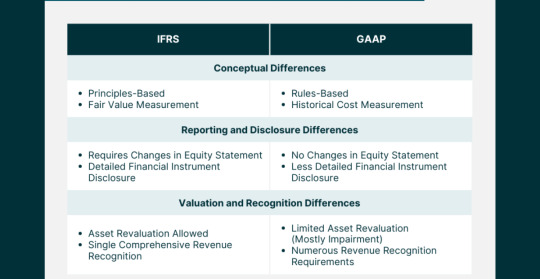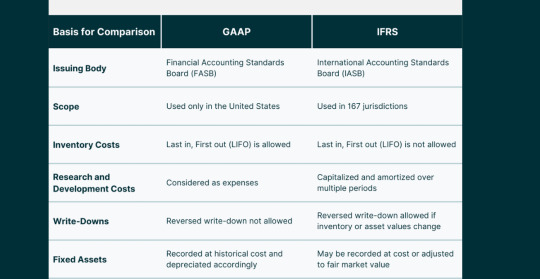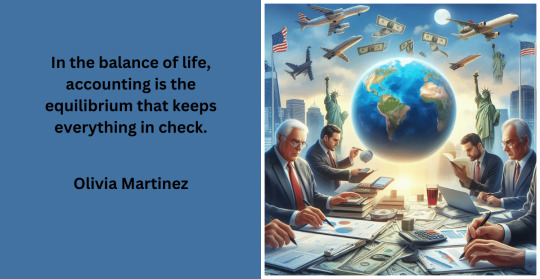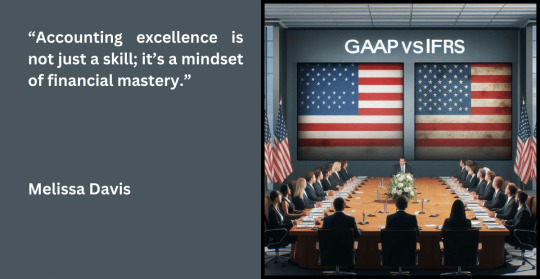#International Finance Assignment Help Service
Explore tagged Tumblr posts
Text
Unlocking Success with International Finance Assignment Help

Celebrating one year of academic triumphs with FinanceAssignmentHelp.com and their exceptional international finance assignment help! As a student navigating the intricate world of international finance, I stumbled upon this academic haven when the challenges seemed insurmountable. Today, on my one-year anniversary with their services, I can't help but reflect on how they have been instrumental in shaping my academic journey.
How FinanceAssignmentHelp.com Helped Me:
International finance is a labyrinth of concepts, theories, and practical applications. Navigating through the complexities of exchange rates, capital flows, and risk management can be daunting for even the most dedicated students. That's where FinanceAssignmentHelp.com stepped in to illuminate the path to success.
This online platform offers unparalleled international finance assignment help, providing customized solutions tailored to individual needs. Whether it's understanding the intricacies of foreign exchange markets or deciphering the nuances of global investment strategies, their team of experts has consistently delivered top-notch assistance.
Why I Needed This Service:
The realm of international finance demands a comprehensive understanding of economic principles, market dynamics, and geopolitical factors. As a student with a fervent desire to excel, I found myself grappling with the intricate details of my international finance assignments. The need for clarity and expert guidance became evident, and that's when I turned to FinanceAssignmentHelp.com.
This service became my academic anchor, offering a lifeline when the waters of financial theories seemed too turbulent. Their team not only possesses profound knowledge of international finance but also has a knack for simplifying complex concepts, making them accessible to students at any level.
How to Find This Service:
Discovering FinanceAssignmentHelp.com was a game-changer for me, and it's a journey that began with a simple online search. The website's user-friendly interface and transparent approach stood out immediately. Navigating through their services, I found a dedicated section for international finance assignment help, complete with testimonials from satisfied students.
The process of finding this service is straightforward. A quick search using keywords like "international finance assignment help" led me straight to their website. The clear layout and detailed information about their services instilled confidence from the start. It's evident that they understand the unique challenges students face in international finance courses and are committed to providing targeted assistance.
Steps to Submitting Assignments and Receiving Solutions:
One of the aspects that sets FinanceAssignmentHelp.com apart is the seamless process they've established for submitting assignments and receiving solutions. The user-friendly interface ensures that even those new to online academic assistance can navigate the process effortlessly.
Place an Order:
Start by placing an order on their website, specifying the details of your international finance assignment. This includes the topic, deadline, and any specific requirements provided by your instructor.
Receive a Quote:
Shortly after submitting your order, you'll receive a quote outlining the cost of the service. The transparent pricing model ensures that you know exactly what to expect, with no hidden fees.
Make Payment:
Once you approve the quote, proceed to make the payment securely through their platform. Multiple payment options are available for convenience.
Work Commences:
The moment your payment is processed, their team of experts starts working on your international finance assignment. Regular updates and communication ensure that you're in the loop throughout the process.
Review and Feedback:
Before the final solution is delivered, you have the opportunity to review the work and provide feedback. This collaborative approach ensures that the solution aligns with your expectations.
Receive the Solution:
Once the assignment is finalized and reviewed, you'll receive the solution promptly. The comprehensive and well-explained answers serve as a valuable learning resource, enhancing your understanding of international finance concepts.
Conclusion:
As I celebrate one year of academic excellence with FinanceAssignmentHelp.com, I can confidently say that their international finance assignment help has been a cornerstone of my success. The journey from grappling with complex concepts to mastering the intricacies of international finance has been transformative, thanks to their unwavering support.
For any student navigating the challenging waters of international finance, I wholeheartedly recommend FinanceAssignmentHelp.com. Their commitment to academic excellence, transparent processes, and a team of knowledgeable experts make them the go-to destination for those seeking not just answers, but a profound understanding of international finance. Here's to many more years of partnership and continued success!
#International Finance Assignment Help#Help With International Finance Assignment#Online International Finance Assignment Help#International Finance Assignment Help Service
10 notes
·
View notes
Text
GAAP vs IFRS

Decoding US Accounting Rules: GAAP vs IFRS | Expert Insights in 2024
Navigate the GAAP vs IFRS debate in US Accounting effortlessly. Gain expert insights, make sense of regulations. Your guide to financial clarity.
The evolving landscape of accounting standards unfolds a nuanced debate between the Generally Accepted Accounting Principles and the International Financial Reporting Standards. These two frameworks, while sharing a common goal of transparent financial reporting, diverge in their approaches, giving rise to a multifaceted discourse with far-reaching implications for the financial world.

1. Introduction
The evolution of accounting standards has witnessed the crystallization of two dominant frameworks – General Accounting Accepted Principles and International Financial Reporting Standards. In the labyrinth of financial reporting, companies grapple with choosing between these standards, each with its unique history, principles, and global relevance. The debate surrounding GAAP vs IFRS is not a mere academic exercise but a pivotal consideration with implications for investment decisions, legal compliance, and the global financial landscape.
1.1. Evolution of Accounting Standards
The journey of accounting standards traces back to the aftermath of the 1929 stock market crash when the need for standardized, transparent financial reporting became glaringly apparent. What emerged were the General Accounting Accepted Principles, designed to restore investor confidence by providing a reliable framework for financial statements. Over time, GAAP has become deeply embedded in the U.S. financial system, shaping the way companies communicate their financial health.
On the global stage, the International Financial Reporting Standards evolved as a response to the growing interconnectedness of economies. The International Accounting Standards Board (IASB) took the reins in developing IFRS, aiming for a standardized global language of financial reporting. This set the stage for a two-pronged approach to financial reporting standards – General Accounting Accepted Principles dominating in the U.S. and International Financial Reporting Standards gaining traction internationally.
1.2. The Crucial Role of GAAP and IFRS
GAAP stands as the bedrock of accounting standards in the United States, overseen by the Financial Accounting Standards Board (FASB). Its principles, rooted in historical cost, revenue recognition, and matching, provide stability and a familiar structure for U.S. businesses. On the other hand, IFRS, under the stewardship of the IASB, operates as a global player, emphasizing fair value, substance over form, and materiality.
The significance of General Accounting Accepted Principles lies in its historical context and its alignment with the unique needs of the U.S. business environment. Its principles have served as a guiding light for American companies, offering a consistent framework for financial reporting. International Financial Reporting Standards, with its global perspective, caters to the interconnectedness of today’s businesses, providing a common language for multinational corporations.
1.3. Navigating the GAAP vs IFRS Dilemma
The choice between General Accounting Accepted Principles and International Financial Reporting Standards is not a one-size-fits-all decision. Companies grapple with a complex decision-making process, considering factors such as their geographical reach, industry nuances, and investor preferences. This debate is not isolated to boardrooms; it resonates in financial markets, legal proceedings, and regulatory landscapes, shaping the very fabric of financial reporting practices.

2. Understanding GAAP
2.1. The Foundation of GAAP
a. Historical Roots and Evolution
GAAP’s roots delve deep into the need for a standardized accounting framework post the 1929 stock market crash. FASB emerged as a response to the chaos that ensued, charged with the responsibility of establishing and improving financial accounting and reporting standards. The journey of GAAP has been one of continuous evolution, adapting to the changing business landscape and regulatory requirements.
b. FASB’s Ongoing Influence
The Financial Accounting Standards Board (FASB) stands as the guardian of GAAP, playing a pivotal role in setting and refining accounting standards. FASB’s mission goes beyond rule-making; it seeks to improve financial reporting, providing transparency and relevance in financial statements. The ongoing influence of FASB ensures that GAAP remains adaptive and responsive to the dynamic nature of business transactions.
2.2. Core Principles Anchoring GAAP
a. Embracing the Historical Cost Principle
One of the cornerstones of GAAP is the historical cost principle, dictating that assets should be recorded at their original cost. This principle provides stability and reliability in financial statements, allowing users to assess the financial health of a company based on the actual cost of its assets at the time of acquisition. While critics argue that this approach may not reflect current market values, proponents emphasize the prudence and consistency it offers.
b. Revenue Recognition as a Cornerstone
GAAP’s approach to revenue recognition centers on the realization and earned criteria. Revenue is recognized when it is realized or realizable and earned. This conservative approach ensures that revenue is not prematurely recognized, aligning with the matching principle. While this method may defer recognizing revenue until later stages in the sales cycle, it safeguards against potential overstatement and presents a cautious picture to investors.
c. The Significance of the Matching Principle
The matching principle is a guiding force in GAAP, emphasizing the alignment of expenses with the revenue they generate. This principle ensures that the costs associated with generating revenue are recognized in the same period as the revenue itself, presenting a more accurate portrayal of a company’s profitability. While adhering to the matching principle might result in lower reported profits during high-revenue periods, it provides a more realistic long-term view.
2.3. Scrutinizing Criticisms and Recognizing Limitations
a. Rigidity vs. Stability
One common criticism leveled against GAAP is its perceived rigidity, particularly regarding the historical cost principle. Critics argue that this approach may not capture the true economic value of assets, especially in industries with rapidly changing market conditions. However, proponents assert that this rigidity provides stability and consistency, allowing for easier comparison across periods and industries.
b. The Balancing Act of Revenue Recognition
The conservative approach to revenue recognition in GAAP has faced scrutiny for potentially understating a company’s immediate financial performance. Critics argue that this caution may not be reflective of a company’s true economic position, especially in industries where revenue realization is instantaneous. However, the balancing act lies in mitigating the risk of premature revenue recognition, ensuring financial statements maintain integrity and accuracy.
c. Challenges in Adhering to the Matching Principle
While the matching principle aligns expenses with revenue, critics contend that it introduces complexities in determining the direct association between costs and specific revenue streams. This challenge becomes more pronounced in industries with diverse revenue sources. Despite these challenges, adhering to the matching principle remains integral in presenting a holistic view of a company’s financial health, helping investors make informed decisions.

3. Embracing IFRS
3.1. IFRS: A Global Framework
a. The Rise of International Financial Reporting Standards
The emergence of IFRS marks a significant shift towards a globalized approach to financial reporting. As businesses expanded internationally, the need for a common accounting language became evident. IFRS, under the stewardship of the International Accounting Standards Board (IASB), rose to prominence as a framework that transcends borders, providing a standardized set of principles for companies operating on the world stage.
b. IASB’s Pivotal Role in Shaping IFRS
The International Accounting Standards Board (IASB) shoulders the responsibility of developing and maintaining IFRS. Unlike GAAP, IFRS operates under a principles-based approach, focusing on broad principles rather than detailed rules. This flexibility allows for easier adaptation to diverse business environments, making IFRS an attractive choice for multinational corporations seeking a harmonized approach to financial reporting.
3.2. Unpacking Core Principles of IFRS
a. Fair Value Measurement: A Paradigm Shift
One of the fundamental differences between GAAP and IFRS lies in the approach to asset valuation. While GAAP predominantly adheres to the historical cost principle, IFRS leans towards fair value measurement. Fair value reflects the current market value of assets, providing a more dynamic and responsive perspective. Critics argue that fair value introduces volatility, but proponents emphasize its relevance in capturing real-time economic conditions.
b. Substance Over Form: Emphasizing Economic Reality
In IFRS, the substance of transactions takes precedence over their legal form. This principle ensures that financial statements reflect the economic reality of transactions, promoting transparency and accuracy. While this approach aligns with the overarching goal of providing relevant information to users, it requires careful judgment and interpretation, potentially introducing subjectivity in financial reporting.
c. Materiality’s Role in Flexibility
IFRS introduces greater flexibility in materiality judgments compared to GAAP. Materiality refers to the threshold at which information becomes relevant to users. The more flexible stance in IFRS allows entities to exercise judgment in determining what information is material, considering both quantitative and qualitative factors. This flexibility, while enhancing the adaptability of IFRS, also raises concerns about potential inconsistencies in financial reporting.
3.3. Weighing Advantages and Drawbacks
a. IFRS Flexibility: A Double-Edged Sword
The flexibility embedded in IFRS is both its strength and weakness. Proponents argue that this adaptability makes IFRS suitable for diverse business environments, allowing for easier integration with various industries and legal systems. However, critics contend that this very flexibility can lead to inconsistencies and a lack of comparability, challenging the reliability of financial statements for investors and stakeholders.
b. Global Appeal vs. Application Challenges
The global nature of IFRS makes it an attractive choice for multinational companies aiming for consistency in financial reporting across borders. The common language of IFRS facilitates international transactions and fosters a seamless global financial landscape. However, the application of IFRS can pose challenges in jurisdictions with varying legal and regulatory frameworks, potentially leading to complexities in implementation and interpretation.

4. Key Differences Between GAAP and IFRS
4.1. Delving into Variances
a. Revenue Recognition: The GAAP-IFRS Divergence
One of the pivotal differences between GAAP and IFRS lies in the recognition of revenue. While both frameworks aim to depict the economic reality of transactions, their approaches diverge in certain key aspects. GAAP tends to be more prescriptive, providing specific guidelines for various industries, whereas IFRS adopts a broader principles-based approach, allowing entities more room for interpretation.
b. Inventory Valuation: Differing Approaches
The treatment of inventory valuation varies significantly between GAAP and IFRS. GAAP typically follows a specific set of rules for valuing inventory, such as the Last In, First Out (LIFO) or First In, First Out (FIFO) methods. In contrast, IFRS permits the use of various methods, including FIFO and weighted average, offering companies more flexibility in choosing an approach that aligns with their specific business dynamics
c. Consolidation Methods: Navigating Complexity
Consolidation methods, particularly in the context of subsidiaries and investments, showcase differences between GAAP and IFRS. GAAP often employs a more rule-based approach, specifying conditions for consolidation. In contrast, IFRS focuses on a principles-based approach, considering the substance of relationships rather than relying on rigid criteria. This variance introduces nuances in financial reporting, influencing how companies present their financial position and performance.
4.2. The Impact on Financial Statements
a. Shaping Investor Perception
The differences in revenue recognition, inventory valuation, and consolidation methods contribute to variations in financial statements produced under GAAP and IFRS. Investors, as key stakeholders, must navigate these differences to gain an accurate understanding of a company’s financial health. The choice between GAAP and IFRS significantly shapes investor perception, influencing investment decisions and risk assessments.
b. Decision-Making Dynamics
Companies, in choosing between GAAP and IFRS, must consider the implications on decision-making dynamics. The framework adopted affects how financial information is presented, potentially influencing strategic decisions, mergers and acquisitions, and capital-raising activities. Understanding the impact of these frameworks on decision-making is crucial for entities operating in dynamic and competitive business environments.
4.3. Global Adoption Trends: A Comparative Analysis
The adoption trends of GAAP and IFRS provide insights into the global dynamics of financial reporting standards. While GAAP maintains dominance within the United States, IFRS has gained traction in numerous jurisdictions worldwide. Understanding the factors influencing these trends, such as regulatory requirements, investor preferences, and global market integration, sheds light on the evolving landscape of accounting standards.
“Accounting isn’t just about profits and losses; it’s about sculpting the financial soul of a company.” Michael Johnson

5. The Evolution of Accounting Standards
5.1. GAAP’s Historical Odyssey
a. Post-1929: A Catalyst for Change
The stock market crash of 1929 served as a catalyst for rethinking the approach to financial reporting. The chaos that ensued prompted the establishment of standardized accounting principles, laying the foundation for what would later become GAAP. The primary goal was to restore investor confidence by providing a reliable framework for financial statements, reducing uncertainty and fostering stability in financial markets.
b. Amendments and Updates: Shaping GAAP’s Trajectory
GAAP’s journey has not been static; it has evolved through amendments and updates to address emerging challenges and align with changing business dynamics. The Financial Accounting Standards Board (FASB) plays a pivotal role in shaping GAAP, ensuring that it remains relevant, transparent, and responsive to the needs of companies and investors. The ongoing commitment to refinement reflects a dedication to maintaining the integrity of financial reporting.
5.2. Internationalization Efforts
a. Pioneering Attempts at Global Standardization
As globalization gained momentum, so did the recognition of the need for global accounting standards. Efforts were made to align U.S. GAAP with international standards, but achieving a universal standard proved challenging. The push for global standardization gained traction with the rise of IFRS, offering a framework that transcends national boundaries and facilitates consistency in financial reporting for multinational corporations.
b. The Challenge of Aligning U.S. Standards Globally
While the concept of global accounting standards gained support, aligning U.S. GAAP with international standards presented formidable challenges. The unique legal, regulatory, and cultural landscape in the United States posed hurdles to seamless integration. Despite these challenges, the pursuit of convergence and harmonization continued, reflecting the recognition of the interconnectedness of global economies.
5.3. Convergence Initiatives
a. The Ongoing Pursuit of Harmonization
Convergence initiatives aimed at harmonizing GAAP and IFRS gained prominence in the early 21st century. The objective was to reduce disparities between the two frameworks, fostering a more standardized global approach to financial reporting. While full convergence remained elusive, progress was made in aligning specific standards, reflecting a commitment to minimizing inconsistencies and facilitating ease of comparison for investors and stakeholders.
b. Prospects and Hurdles in a Unified Global Standard
The prospects of a unified global accounting standard remain a tantalizing goal, promising enhanced comparability and consistency in financial reporting. However, hurdles such as divergent national interests, legal complexities, and varying levels of standard-setting infrastructure continue to challenge the realization of this vision. Navigating these obstacles requires ongoing collaboration and a commitment to the overarching goal of global financial transparency.

6. Regulatory Bodies Influencing GAAP
6.1. FASB’s Pivotal Role
a. GAAP’s Guardian: The FASB Mandate
The Financial Accounting Standards Board (FASB) stands as the guardian of GAAP, wielding influence over the development and refinement of accounting standards. FASB’s mandate goes beyond rule-making; it encompasses a commitment to improving financial reporting, ensuring that standards are not only relevant but also responsive to the evolving needs of businesses and investors.
b. FASB’s Mission in Financial Reporting Improvement
FASB’s mission revolves around the improvement of financial reporting through the development of high-quality accounting standards. The board operates under a due process system, seeking input from various stakeholders, including investors, auditors, and preparers of financial statements. This collaborative approach ensures that GAAP remains a robust and adaptive framework that reflects the intricacies of modern business transactions.
6.2. SEC’s Watchful Eye
a. SEC’s Authority in Recognizing GAAP Standards
The Securities and Exchange Commission (SEC) plays a crucial role in the oversight of financial reporting in the United States. While the FASB sets accounting standards, the SEC has the authority to recognize and prescribe the principles used in the preparation of financial statements for publicly traded companies. This dual-layered system ensures a balance between industry expertise and regulatory oversight in shaping GAAP.
b. SEC’s Contributions to Financial Transparency
The SEC’s contributions to financial transparency extend beyond its recognition of GAAP standards. The commission actively engages in rule-making and enforcement to ensure that companies adhere to accounting principles and provide accurate and timely financial information to investors. The synergy between the SEC and FASB reinforces the integrity of financial reporting in the U.S. capital markets.
6.3. AICPA’s Industry Impact
a. AICPA: Nurturing Professional Standards
The American Institute of Certified Public Accountants (AICPA) plays a vital role in shaping professional standards within the accounting industry. While not directly involved in setting GAAP, the AICPA contributes to the development of ethical and professional standards that guide the conduct of accountants. This commitment to excellence enhances the credibility of financial reporting, reinforcing the trust that stakeholders place in GAAP.
b. Industry-Wide Compliance through AICPA Guidance
The AICPA’s influence extends beyond standards development to encompass industry-wide compliance. The organization provides guidance on best practices, ethical considerations, and emerging issues within the accounting profession. This guidance ensures a cohesive and ethical approach to financial reporting, aligning with the principles embedded in GAAP and contributing to the overall reliability of financial statements.

7. International Bodies Shaping IFRS
7.1. IASB’s Global Mandate
a. IASB’s Significance in IFRS Development
The International Accounting Standards Board (IASB) holds a central role in the development and maintenance of IFRS. Unlike the FASB’s role in the U.S., the IASB operates on a global scale, aiming to set accounting standards that are applicable and relevant to entities worldwide. The IASB’s commitment to a principles-based approach reflects its recognition of the diverse needs of global businesses.
b. A Global Perspective in Standard Setting
The IASB’s global perspective is intrinsic to its standard-setting process. The board considers input from various regions, industries, and stakeholders, ensuring that IFRS reflects the nuances of international business. The principles-based approach allows for adaptability, catering to the diverse legal, economic, and cultural landscapes in which entities operate globally.
7.2. IFRIC’s Interpretative Role
a. Navigating Grey Areas: IFRIC’s Guidance
The International Financial Reporting Interpretations Committee (IFRIC) plays a crucial role in navigating interpretative challenges within IFRS. Given the principles-based nature of IFRS, grey areas may arise, requiring clarification and guidance. IFRIC addresses these challenges by providing interpretations and guidance, ensuring consistent application of IFRS standards across diverse industries and jurisdictions.
b. Consistent Application of IFRS Standards
Consistency in the application of IFRS standards is paramount to ensuring comparability and reliability in financial reporting. IFRIC’s interpretative role contributes to this objective by offering guidance on ambiguous or complex issues. This commitment to clarity and consistency aligns with the overarching goal of IFRS – to provide a common language for financial reporting that transcends geographical and industry-specific boundaries.
7.3. Monitoring Board’s Oversight
a. Ensuring Independence in Standard Setting
The Monitoring Board plays a crucial oversight role in ensuring the independence and effectiveness of the IFRS Foundation, which houses the IASB. Independence is a cornerstone of credible standard-setting, and the Monitoring Board’s role is to safeguard the integrity of the standard-setting process. This commitment to independence reinforces the trust that global stakeholders place in IFRS as a reliable and unbiased framework.
b. The Role of the Monitoring Board in IFRS Integrity
The Monitoring Board’s vigilance extends beyond independence to the broader integrity of the IFRS framework. By overseeing the activities of the IFRS Foundation and IASB, the Monitoring Board contributes to the credibility of IFRS as a global accounting standard. This oversight ensures that IFRS continues to meet the evolving needs of global financial markets and remains a trusted framework for transparent financial reporting.

8. Impact on Financial Reporting
8.1. Side-by-Side Comparison
a. Financial Statement Variances: GAAP vs IFRS
A side-by-side comparison of financial statements prepared under GAAP and IFRS reveals variances arising from differences in principles, approaches, and interpretations. These variances extend to revenue recognition, asset valuation, and consolidation methods, influencing the reported financial position and performance of entities. Investors and analysts must navigate these differences to glean accurate insights into a company’s financial health.
b. Interpretation Challenges for Investors
Investors face interpretation challenges when analyzing financial statements prepared under different frameworks. Understanding the nuances of GAAP and IFRS differences is crucial for making informed investment decisions. The ability to discern how specific accounting choices impact financial metrics empowers investors to evaluate risks, assess potential returns, and navigate the complexities of the global investment landscape.
8.2. Revenue Recognition Dynamics
a. The Nuances of Revenue Recognition
The nuances of revenue recognition under GAAP and IFRS reflect the underlying philosophies of each framework. GAAP, with its prescriptive guidelines, provides specific criteria for recognizing revenue in various industries. In contrast, IFRS adopts a broader approach, emphasizing the substance of transactions over rigid rules. Navigating these nuances requires a deep understanding of industry dynamics and the specific requirements of each framework.
b. Implications for Investor Decision-Making
The implications of revenue recognition dynamics extend to investor decision-making. Differences in when and how revenue is recognized can influence perceptions of a company’s immediate financial performance. Investors must factor in these nuances to make informed decisions, considering the impact on key financial metrics such as earnings per share, profit margins, and return on investment.
8.3. Asset Valuation Approaches
a. Valuation Philosophies: Fair Value vs. Historical Cost
The variance in asset valuation philosophies between GAAP and IFRS introduces complexities in financial reporting. GAAP’s adherence to historical cost provides stability and consistency, albeit potentially understating the current market value of assets. In contrast, IFRS’s emphasis on fair value introduces a more dynamic and responsive approach to asset valuation. Companies must navigate the trade-offs between stability and accuracy in presenting their financial position.
b. Balancing Accuracy and Stability in Asset Reporting
Balancing accuracy and stability in asset reporting requires careful consideration of the trade-offs between fair value and historical cost. Companies must weigh the benefits of presenting current market values against the potential volatility introduced by fair value measurements. Striking the right balance ensures that financial statements accurately reflect the economic reality of a company’s assets while providing stakeholders with a stable and reliable foundation for decision-making.

9. Challenges in Adoption
9.1. Corporate Resistance Factors
a. Unpacking Corporate Hesitations
The decision to adopt new accounting standards, whether transitioning from GAAP to IFRS or vice versa, is met with corporate hesitations. Companies fear the potential disruptions, costs, and uncertainties associated with the transition. Understanding these resistance factors is essential for regulatory bodies, standard-setters, and industry stakeholders to develop strategies that facilitate smoother adoptions and ensure widespread compliance.
b. Overcoming Corporate Resistance Challenges
Overcoming corporate resistance challenges requires a multi-faceted approach. Clear communication on the benefits of the new standards, comprehensive training programs, and support mechanisms can alleviate concerns. Regulators and standard-setters must collaborate with industry representatives to address specific challenges faced by different sectors, fostering a cooperative environment conducive to successful adoptions.
9.2. Implementation Costs
a. Financial and Operational Impacts
The implementation of new accounting standards incurs financial and operational impacts for companies. Costs associated with staff training, system upgrades, and adjustments to internal processes contribute to the overall financial burden. Companies must carefully assess these costs and develop comprehensive implementation plans to mitigate disruptions and ensure a seamless transition to the new standards.
b. Strategies for Mitigating Implementation Costs
Strategies for mitigating implementation costs involve proactive planning, phased adoption approaches, and leveraging technology. Companies can benefit from engaging with industry peers that have successfully navigated similar transitions, learning from best practices and challenges. Collaboration between standard-setters, regulatory bodies, and industry associations plays a crucial role in developing strategies that balance the need for improved standards with the practicalities of implementation.
9.3. Training and Skill Gaps
a. The Need for Specialized Training
The adoption of new accounting standards introduces the need for specialized training to ensure that professionals possess the skills required for compliance. Training programs must address the nuances of the new standards, focusing on changes in accounting principles, reporting requirements, and the application of new methodologies. Bridging skill gaps is crucial for maintaining the integrity and accuracy of financial reporting.
b. Collaborative Approaches to Skill Development
Collaborative approaches to skill development involve partnerships between educational institutions, professional organizations, and industry players. The goal is to create comprehensive training programs that equip professionals with the knowledge and skills necessary for successful compliance. Standard-setters and regulators can play a pivotal role in promoting and endorsing such collaborative initiatives, fostering a culture of continuous learning within the accounting profession.

10. Legal Implications for Corporations
10.1. Legal Challenges in GAAP Compliance
a. Litigation Risks in GAAP Adherence
The legal challenges associated with GAAP compliance include litigation risks arising from alleged non-compliance. Companies adhering to GAAP must navigate the complexities of the legal landscape, ensuring that their financial statements withstand scrutiny. Implementing robust internal controls, engaging in transparent communication, and staying abreast of legal developments are essential strategies for mitigating litigation risks.
b. Strategies for Legal Compliance in GAAP
Strategies for legal compliance in GAAP involve proactive measures to minimize litigation risks. This includes fostering a culture of compliance within the organization, conducting regular internal audits, and seeking legal counsel to ensure alignment with evolving regulations. Companies that prioritize legal compliance contribute to the overall stability and trustworthiness of the financial reporting ecosystem.
10.2. Legal Battles in IFRS Adoption
a. Navigating Legal Challenges in IFRS Transition
The transition to IFRS introduces legal battles that companies must navigate effectively. Disputes may arise over interpretations of IFRS standards, potentially leading to litigation. Companies must engage in comprehensive risk assessments, understanding the legal implications of IFRS adoption, and implementing measures to mitigate potential legal challenges.
b. Legal Safeguards for Companies Adopting IFRS
Legal safeguards for companies adopting IFRS involve proactive steps to minimize legal risks. This includes engaging legal experts in the transition process, conducting impact assessments, and implementing robust governance structures. Companies that prioritize legal safeguards position themselves to navigate the complexities of IFRS adoption with resilience and integrity.
10.3. Risk Mitigation Strategies
a. Legal Safeguards: Mitigating Risks in Regulatory Compliance
Legal safeguards play a pivotal role in mitigating risks associated with regulatory compliance. Companies must implement effective risk management strategies, including regular legal audits, compliance training, and a responsive approach to legal developments. A proactive stance towards legal safeguards enhances a company’s ability to navigate the intricate landscape of financial reporting standards.
b. Strategies for Minimizing Legal Challenges in Reporting Standards
Strategies for minimizing legal challenges in reporting standards involve a holistic approach to risk management. This includes collaboration with legal professionals, staying informed about evolving regulations, and fostering a culture of compliance within the organization. Companies that prioritize these strategies not only mitigate legal challenges but also contribute to the overall reliability and credibility of financial reporting standards.

11. Investor Perspectives
11.1. Investor Preferences
a. Surveying Investor Preferences: GAAP or IFRS?
Understanding investor preferences is crucial in the GAAP vs. IFRS discourse. Surveys play a valuable role in gauging investor sentiment and preferences regarding financial reporting standards. The insights gleaned from such surveys inform standard-setters, regulators, and companies in aligning financial reporting practices with investor expectations.
b. Implications of Investor Preferences on Reporting Standards
The implications of investor preferences on reporting standards are far-reaching. Companies that align with investor preferences enhance transparency and communication, fostering trust and confidence. Standard-setters and regulators, informed by investor feedback, can shape standards that not only meet regulatory requirements but also cater to the information needs of investors in a dynamic and competitive market.
11.2. Impact on Investment Decision-Making
a. Investor Decision Dynamics: GAAP vs IFRS
Investor decision dynamics are influenced by the choice between GAAP and IFRS. Differences in financial reporting standards can impact the comparability of financial statements, influencing investment decisions. Investors must consider the implications of these standards on key metrics, risk assessments, and overall financial analysis to make informed and strategic investment decisions.
b. Strategic Impacts on Investment Choices
The strategic impacts of financial reporting standards on investment choices go beyond compliance. Companies that recognize the link between transparent financial reporting and investor confidence gain a strategic advantage. Similarly, investors who factor in the nuances of GAAP and IFRS differences in their decision-making processes navigate the complexities of the investment landscape more effectively.
11.3. Investor Education Initiatives
a. The Imperative of Investor Education
The imperative of investor education underscores the need for initiatives that enhance investor understanding of financial reporting standards. Educational programs, informational resources, and collaborative efforts between financial institutions and regulatory bodies contribute to a more informed investor community. An educated investor base not only demands higher standards of transparency but also actively participates in shaping the future trajectory of financial reporting.
b. Educating Investors on GAAP vs IFRS Implications
Educating investors on GAAP vs. IFRS implications involves demystifying the complexities of these frameworks. Providing accessible information, conducting investor workshops, and leveraging digital platforms for educational outreach are essential components. Investors empowered with a deeper understanding of financial reporting standards contribute to market efficiency and hold companies accountable for transparent and reliable reporting.

12. Ethical Considerations
12.1. Ethical Dimensions in Financial Reporting
a. Ethics in Financial Reporting Standards
Ethical considerations are integral to the formulation and adherence to financial reporting standards. The principles of integrity, objectivity, and transparency underpin ethical financial reporting. Standard-setters, regulators, and companies must navigate ethical dimensions to ensure that financial reporting serves the interests of investors and the broader public.
b. Upholding Integrity and Objectivity in Reporting
Upholding integrity and objectivity in reporting requires a commitment to ethical conduct. Companies must prioritize accurate representation over short-term gains, fostering a culture that values transparency. Regulators play a crucial role in setting the ethical tone, emphasizing the importance of unbiased and principled financial reporting in maintaining the integrity of capital markets.
12.2. Ethical Challenges for Accountants
a. Common Ethical Dilemmas in GAAP and IFRS
Accountants face common ethical dilemmas in navigating the intricacies of GAAP and IFRS. Issues such as revenue recognition, asset valuation, and disclosure requirements present challenges where ethical considerations intersect with professional responsibilities. Accountants must navigate these dilemmas with a commitment to ethical conduct, considering the broader impact on stakeholders and financial markets.
b. Navigating Ethical Challenges in Reporting Standards
Navigating ethical challenges in reporting standards involves equipping accountants with the tools and guidance needed for principled decision-making. Ongoing professional development, ethical training programs, and mentorship initiatives contribute to a culture of ethical awareness within the accounting profession. Companies, in turn, benefit from the assurance that financial reporting is not only compliant but also aligns with the highest ethical standards.
12.3. Regulatory Measures for Integrity
a. Regulatory Safeguards: Ensuring Ethical Conduct
Regulatory safeguards play a crucial role in ensuring ethical conduct in financial reporting. Regulatory bodies must establish and enforce ethical standards, conduct regular audits, and impose sanctions for non-compliance. A robust regulatory framework promotes integrity in financial reporting, reinforcing public trust in the accuracy and reliability of financial statements.
b. Maintaining the Integrity of Financial Reporting Standards
Maintaining the integrity of financial reporting standards requires a collaborative effort between regulators, standard-setters, and industry stakeholders. Periodic reviews, stakeholder consultations, and responsiveness to emerging ethical challenges contribute to the ongoing refinement of standards. The commitment to upholding ethical principles ensures that financial reporting continues to serve as a cornerstone of trust in the global business landscape.

13. Future Trajectories
13.1. The Evolution of Reporting Standards
a. Anticipating Future Changes
Anticipating future changes in reporting standards involves considering the dynamic nature of global business, technological advancements, and shifts in investor expectations. Standard-setters must adopt a forward-looking approach, engaging in scenario planning and staying attuned to emerging trends. The ability to anticipate future changes ensures that reporting standards remain relevant and adaptive to the evolving needs of the business environment.
b. Technological Innovations and Reporting
Technological innovations are poised to shape the future trajectory of reporting standards. The integration of artificial intelligence, blockchain, and data analytics introduces opportunities for enhanced accuracy, efficiency, and transparency in financial reporting. Standard-setters and companies must embrace these innovations responsibly, balancing the benefits of technology with the imperative of maintaining ethical and transparent financial practices.
13.2. Convergence vs. Divergence
a. Assessing Convergence Prospects
The prospects of convergence between GAAP and IFRS continue to be a topic of consideration. While convergence offers the promise of a more standardized global approach, challenges such as differing legal frameworks and regulatory philosophies persist. Assessing convergence prospects involves a nuanced examination of global trends, regulatory developments, and ongoing efforts by standard-setters to bridge divergences.
b. Navigating Divergences in Global Standards
Navigating divergences in global standards requires a pragmatic approach that acknowledges the unique needs of individual jurisdictions. The coexistence of multiple standards necessitates effective communication, education, and cross-border collaboration. Standard-setters can play a pivotal role in facilitating harmonization efforts, fostering a global financial reporting landscape that balances convergence with the flexibility needed to accommodate diverse economic and regulatory environments.
13.3. Sustainable Reporting Paradigms
a. The Rise of Sustainable Reporting
The rise of sustainable reporting reflects a paradigm shift in the broader understanding of corporate performance. Investors, regulators, and the public increasingly recognize the importance of environmental, social, and governance (ESG) factors. Future reporting standards are likely to integrate sustainable reporting paradigms, providing a more comprehensive view of a company’s long-term value creation and societal impact.
b. Integrating ESG Metrics into Reporting Standards
Integrating ESG metrics into reporting standards requires a collaborative effort between standard-setters, regulators, and industry stakeholders. The development of clear guidelines, standardized metrics, and transparent disclosure requirements enhances the credibility of sustainable reporting. Companies embracing ESG considerations in their financial reporting contribute to a more informed and responsible investment landscape.

14. Conclusion
Financial reporting standards, whether grounded in GAAP or IFRS, serve as the bedrock of transparency, trust, and accountability in the global business landscape. The evolution of these standards reflects a journey of adaptation to changing business dynamics, regulatory landscapes, and investor expectations. While GAAP and IFRS diverge in certain philosophies and approaches, they share a common goal – to provide reliable and relevant information for decision-making.
As we navigate the complexities of GAAP vs. IFRS, it is imperative to recognize the strengths and limitations of each framework. GAAP, with its historical cost emphasis and rule-based approach, offers stability and comparability. In contrast, IFRS, operating under a principles-based approach, provides flexibility and a global perspective. Understanding the variances in revenue recognition, asset valuation, and consolidation methods is essential for investors, analysts, and companies alike.
Looking ahead, the trajectory of reporting standards involves a delicate balance – between convergence and divergence, between technological innovation and ethical considerations, and between traditional financial metrics and sustainable reporting paradigms. The future holds the promise of more standardized, adaptive, and responsible reporting standards that cater to the diverse needs of a dynamic global economy.
In conclusion, as the landscape of financial reporting continues to evolve, stakeholders must remain vigilant, adaptive, and collaborative. Whether one adheres to GAAP or IFRS, the shared commitment to integrity, transparency, and accountability ensures that financial reporting remains a cornerstone of trust in the interconnected world of business and finance.

#cfo#banking#accounting#finance#investment#personal finance#international finance assignment help service#financial management#financial markets#financial modeling#financial planning#financial dominance#financial services#financial literacy#financial drain#management#business#entrepreneur
0 notes
Text
International Finance Mastery: The Key Role of Assignment Help in Student Success

In the dynamic realm of academic pursuits, mastering international finance is a critical milestone for students aspiring to navigate the complexities of global economies. As students delve into the intricate world of international finance, they often find themselves grappling with challenging assignments that demand a deep understanding of diverse financial concepts. This is where the invaluable support of international finance assignment writing help comes into play. In this blog, we will explore the significance of assignment assistance in enhancing student success in the field of international finance.
Understanding the Challenges:
International finance is a multifaceted discipline that encompasses a wide array of topics, including exchange rates, foreign direct investment, global financial markets, and risk management. The complexity of these subjects often leaves students feeling overwhelmed and in need of guidance. Assignments in international finance require students to apply theoretical concepts to real-world scenarios, analyze data, and draw meaningful conclusions. This can be a daunting task, especially for those still grasping the fundamentals of the subject.
The Role of International Finance Assignment Writing Help:
Conceptual Clarity: International finance assignment help services play a pivotal role in providing students with conceptual clarity. Professional writers with expertise in international finance can break down complex theories and explain them in a manner that is easy for students to comprehend. This not only aids in completing assignments successfully but also contributes to a deeper understanding of the subject matter.
Timely Submission: The academic journey is often characterized by tight deadlines and competing priorities. Assignment help services offer a lifeline to students by ensuring timely submission of assignments. Meeting deadlines is crucial for academic success, and expert assistance can alleviate the stress associated with last-minute rushes, allowing students to focus on learning rather than time constraints.
Customized Solutions: Every assignment is unique, and international finance assignments are no exception. Assignment help services provide customized solutions tailored to the specific requirements of each task. This ensures that students receive content that is not only accurate but also relevant to the assignment's objectives, enhancing the overall quality of their submissions.
Enhanced Research Skills: Assignments in international finance often require extensive research and data analysis. Seeking assistance from professionals in the field can serve as a learning opportunity for students, helping them develop their research skills. By reviewing well-crafted assignments, students can gain insights into effective research methodologies and apply them to their future academic endeavors.
Graded Excellence: The ultimate goal of any student is to achieve academic excellence. International finance assignment writing help services are equipped to deliver assignments that meet the highest academic standards. As a result, students stand a better chance of securing top grades, boosting their overall academic performance and opening doors to future opportunities.
Mentorship and Guidance: Beyond the completion of assignments, seeking help from professionals provides students with valuable mentorship and guidance. Experienced writers can offer insights into the practical applications of international finance concepts, preparing students for challenges they may encounter in the real-world scenarios of the global financial landscape.
Conclusion:
In the intricate landscape of international finance, assignment help services serve as a beacon of support for students navigating the challenges of this dynamic field. From conceptual clarity to timely submission and mentorship, the benefits of seeking international finance assignment writing help are manifold. As students aspire to master the complexities of global finance, they can leverage these services to not only excel academically but also gain valuable insights that will shape their future success in the international financial arena. Embracing this assistance is not a sign of weakness but a strategic move towards a brighter and more informed academic journey.
#Online international finance Assignment Help#international finance assignment help service#international finance assignment help online#international finance assignment help usa#international finance assignment help australia
0 notes
Text
Working Capital Optimization: Essential Help for Finance Assignments
Introduction: What is Working Capital?
Working capital constitutes a crucial principle in the field of finance, signifying the short-term liquidity position of a firm. It is defined as the difference between an organization's current assets—encompassing cash, inventory, and accounts receivable—and its current liabilities, including accounts payable and short-term debt. In essence, it denotes the financial resources available to the company to facilitate its daily operational needs. Effective working capital management ensures that a company can meet its operational needs and financial obligations, while also channeling available resources to facilitate growth in the company.
Every student or learner involved in finance studies or assignments particularly those that relate to working capital, must understand the factors that explain the working capital. Why? Working capital belongs to the most critical indicators of financial performance since they directly reflect the financial result, availability of funds for operations, and risks involved. Effective management of work capital can enhance or develop efficiency in the business hence enhancing the performance by the firm. For students, to understand these dynamics students are usually tasked to solve various numerical questions to gain insights into the practical financial operations of businesses.
By opting for finance assignment help, students can get to know more about the perspective of working capital optimization and other advanced techniques in the field. This means that one can seek working capital study assistance from professional experts, especially in complex working capital problems as opposed to what is found in textbooks and theories. This involves an opportunity for students to gain a greater understanding of the subject, hence exposing them to applicable strategies for succeeding in their assignments.

Working Capital Optimization: Issue Diagnosis in Details
Working capital optimization can be defined as the means and methods that are used in the management of the short-term assets and liabilities of a business with the aim of ensuring the operations of the firm are done in the most efficient and profitable manner. This also means that there is a fine line to be drawn between the need for liquid assets to meet short-term obligations and bringing down capital expenses.
As regards finance students, it may appear that working capital optimization is quite simple and quite basic as a subject however in a real sense, it is quite an elaborate and complicated subject that can make or break a business. In this regard, we shall look at why working capital optimization is important, how the companies achieve these goals and real cases where companies have demonstrated a working capital optimization impact.
Why Optimize Working Capital?
It is quite evident that working capital management is of great importance for all businesses as it influences many key performance metrics:
Liquidity: Sufficient working capital ensures that the company can perform its short-term obligations in terms of paying off suppliers and employees.
Profitability: Proper working capital management will minimize the capital cost incurred, therefore increasing cash flows available for financing growth and innovation.
Operational Performance: Focused and disciplined working capital management enables businesses to operate more efficiently, decrease waste, and enhance stock control.
Risk Management: Working capital management in a business alleviates the operational risk exposure – Supply Chain risks, economic downturns, and other surprises that a business may experience.
For students, such a study helps to understand the rationale behind the varying impacts of the financial decisions made in a company on its various operations.
Ways on how Working Capital can be Improved
There are various strategies that can be recommended for companies that require improvement of the working capital. These strategies are aimed at ensuring that companies maintain adequate amounts of cash, increase cash inflows, and reduce cash outflows that are unnecessary in the first place.
Inventory Management
Inventory management is one of the key components of working capital management. A firm can enhance its liquidity profile by lowering the total stock holding of unsold products by minimizing excess stocks.
Methods such as JIT manufacturing systems, where products are sourced and produced only when needed. This approach helps companies save on stockholding expenditure and overproduction.
Example: Toyota was able to change the face of the auto industry with the implementation of the manufacturing system called Just In Time (JIT), giving the extra edge of efficiency coupled with a reduction in working capital requirements.
Accounts Receivable Management
Customers paying their bills within the set timeframe is very important. For further optimization of receivables, some credit control measures are often applied such as allowing discounts for early payments or limiting credit for customers with a history of poor payments.
Another approach known as factoring helps in supplementing working capital. This involves receivables sold to a third party thus providing cash flow in a shorter time frame.
Case Study: In its attempt to improve cash flow, General Electric in the year, 2009 commenced sales of parts of its receivables and created 2 billion in capital within a year leading the firm to focus more on growth and investment avenues.
Accounts Payable Management
The payable side is much more interesting. This is about optimizing for the longest period before making any payment ta the supplier without jeopardizing any existing credit or relationships. Cash flow may be enhanced if payment terms can be adjusted without any serious penalty for longer terms.
Purchasers may utilize the assisted financial program to make early payments to their suppliers through financial institutions, while the purchaser gets extended terms to preserve working capital.
Example: Walmart has entered into extended payment terms with its suppliers to preserve its working capital for longer terms.
Cash Management
Firms need to ensure that there is an optimal cash reserve committed to the working capital requirements and also minimize cash that is idle earning no returns.
Firms utilize sweeping mechanisms, in which the excess cash is transferred to an interest-bearing account thereby making returns out of excess cash and at the same time preserving liquidity.
Example: Microsoft is well known for its cash management practices. The world’s biggest computer software company has for many years managed to keep positive working capital instead of spending it on many things and maintains generous cash reserves for investments, buying back stock, and paying dividends.
The Role of Working Capital Management
The effect of working capital optimization is not limited to the enhancement of liquidity and cash flow alone. This is capable of reinventing the potential of a company for growth and competitiveness within the industry.
Better Financial Condition: Reduction in the amounts tied up in working capital positively impacts the company's operating cycle and the balance sheet. Improvement in some of the operational ratios such as current and quick ratios is also observed. This subsequently increases the creditworthiness and the cost of borrowing reduces.
Secure Superior Position: Efficient working capital allows organizations to respond to changes in the market more effectively. For instance, they will be able to take advantage of bulk buying discounts and invest in new opportunities more quickly than its competitors.
Recovery from Impacts: When the economy is going through difficult times, the likelihood of companies that strategically manage their working capital to manage disruptions. For instance, during the most recent period when the majority of the companies were in a cash liquidity crisis due to covid19 pandemic, companies that effectively managed cash flows survived.
Long-Term Development: Firms can free up cash from operational efficiency which then allows them to seek more growth opportunities like R&D, marketing, or expansion. Optimization of working capital, therefore, becomes the initial move towards the attainment of competitive advantage in due time.
Case Example: Apple Inc.
Apple Inc. is probably the most referenced case when it comes to the optimization of working capital. This has been made possible because of the peculiarities in the businesses of Apple-it is able to maintain working capital which is negative by collecting money from customers before it pays suppliers. This offers the company a huge liquidity edge and a key reason behind its financial performance.
Due to Apple’s excellent supply chain management processes and beneficial contractual payment agreements with suppliers, the company does not require additional working capital. Such a strategy releases massive amounts of cash flow, which Apple has invested in R&D, advertising, and acquisitions. As a result, Apple has grown and become a market leader.
Expert Finance Assignment Help for MBA Students
Our finance assignment assistance service is primarily directed toward MBA students who are having a tough time comprehending and practicing difficult areas such as working capital management. We offer detailed, individualized help to students in dealing with difficult assignments, case studies, and analysis.
As for complicated financial topics including working capital optimization, our company employs seasoned financial specialists with expertise in sophisticated techniques on liquidity, cash flow, and operational efficiency management. We break down these concepts into simple steps for students to facilitate their understanding of the theory and practical aspects of the problem. Our aim is not only to assist the learners in solving practical problems but help them learn how and when to utilize these techniques when they face real financial problems.
How Our Service Makes Complex Financing Problems Simple
We use a combination of visuals, like flowcharts and financial models in order to simplify difficulties in complicated financial problems. By demonstrating the relation between the problem to its financial theory, we make sure that students never miss any important aspect of the solution. We offer tailored solutions for case studies and give in-depth information on different working capital strategies used by top companies. This helps students understand how to use these strategies in their studies.
More Sophisticated Techniques and Wider Scope
We introduce students to new and improved methods that they can adopt in solving questions that go beyond the basics of financial management. Among those advanced techniques include; modeling of dynamic working capital, cash conversion optimization, and enhancing working capital with financial technologies.
Apart from working capital optimization, we also offer finance assignment assistance in a wide range of subjects including but not limited to:
Corporate Finance
Risk Management
Investment Analysis
Financial Statement Analysis
Capital Budgeting
Mergers & Acquisitions
Benefits for MBA Students:
Many students ask the question: “Why should I choose your service?” The explanation is that they not only get custom-made solutions that enable them to complete their tasks in due time but also enhance their grasp of contemporary financial principles. Our specialists always give new ideas to the students to enable them to apply in their coursework assignments for top grades.
Conclusion:
Working capital management is an important aspect of financial management. This influences liquidity and profitability as well as risk factors. Students studying finance must learn the concepts to have a deeper understanding of the practical issues of business functioning. By opting for our service and getting help with finance assignments, students can learn from experts and understand important topics better. We provide sample problems, case studies, textbooks, and research papers to help students complete their assignments confidently and clearly.
Textbooks and References for Students
For students who want to undertake deeper studies in the area of working capital optimization, the is a selection of relevant textbooks and some research papers that lay a good base.
One such textbook is “Financial Management: Theory and Practice” by Eugene F. Brigham & Michael C. Ehrhardt.– This particular book attempts to explain the fundamentals of why decisions are made financially with reasonable chapters on working capital management.
Corporate Finance Jonathan Berk and Peter DeMarz– A commonly recommended textbook, which considers some of the working capital management aspects among other principles of financial management.
#Financial analysis homework help#Help with finance projects#Personal finance assignment assistance#Financial management homework help#Online finance tutoring services#Finance case study assistance#International finance assignment help#Accounting and finance assignment help#Financial modeling assignment support
0 notes
Text
Jedi Order Bureaucratic Structure
I’ve been working for a while on worldbuilding the inner workings of the Jedi Order. Below is a flowchart of the administrative bodies, their duties, and any other admin bodies they oversee. More details on each below the cut.
These are different groups involved in running the Jedi Order. For different roles within the Jedi, see my Jedi Order Corps and Subdivisions.

High Council: (Finance, bylaws, PR, major trials)
Determines the budget(s)
Relations with the Senate
Only body that can expel members
Librarian's Assembly: (Ensures knowledge is available to Jedi)
Fund academic researchers (many Jedi researchers work directly for the assembly)
Archives: (Run the Archives & research)
Host academic conferences
Protect important artifacts
Run basically directly by the Librarian's Assembly
Department of Classes: (Adult education)
Organize all classes that aren't geneds
Set criteria for certifications/ degrees
Help members get degrees from external organizations
Council of Reassignment: (Oversees transfers & is Jedi CPS)
New Initiate paperwork
Transfers between corps and/or branches
Helps members leave the Order
Checks the CoFK when necessary
Padawanship paperwork filed here (crèchemasters sign off, padawan signs off, check master for red flags/ not allowed to take apprentice, sometimes mind healer signs off)
Council of Justice: (Attourneys & internal justice system)
Try & punish cases committed by Jedi & internal to the Jedi Order
Mediate interpersonal disputes
Lawyers for the Order
Cannot expel members
Council of Outreach: (Manages outposts & patrols)
Assigns Jedi to satellite locations or watchfolk posts
Hires other outpost staff
Ships supplies to & from outposts
Tracks the locations of missions & sends Vanguards to areas that haven't been visited recently
Council of Temple Maintenance: (Oversees internal services and temple upkeep)
In charge of the cleaning droids
Coordinates trash & recycling with Coruscant government
Has the occasional member who can do specialized maintenance (ex. plumber, electrician)
Volunteers sign up to fix things
Hires outside contractors when there isn't a Jedi with the necessary skills
Assigns Jedi to living quarters
Interior decor
Delegates chores such as taking out the trash, mopping, dusting, etc.
Padawans and initiates are often assigned these chores as punishments
Kitchenmasters: (Mess halls)
Make & serve food in the mess halls
Label the food with which species can eat it
Order food supplies
Supervise initiate clans helping in the kitchens
Quartermasters: (Distribute supplies & manage finances)
Bulk-order supplies for the Order
Provide mission allotments
Desk operators help members pick up supplies
Accounting
Transport Office: (Run the hangar bay & speeder pool)
Responsible for the Order's vehicles
Mechanics
Vehicles are checked in & out like a library for cars & ships
Hire external staff when there aren't enough Jedi
Temple Guard: (Security & emergency response)
Guard against exterior threats to the temple
Security during criminal situations
Really good at sensing danger to temple inhabitants
First responders (fire & police-- MedCorp handles EMS)
Change lightbulbs and smoke detector batteries
Odd jobs on behalf of the CoTM
Uses the lore by Adsecula in "Nameless"
Council of Reconciliation: (Central hub of Jedi outreach & diplomacy)
All aid requests go through them
Sets mission objectives
Approve or deny aid/ mission requests
Reviews behavior of Jedi on missions when there are issues
Mission Consignment: (Assign Jedi to approved missions)
Desk jockeys
Not officially divided by type of mission/ Jedi role needed, but missions will be passed to people who are more familiar with the experts required
Organizes specifics for missions such as transportation and housing
Council of First Knowledge: (Runs Initiate & Padawan dorms, clans, & childhood education)
Initiate clans members live together with their crèchemasters rotating out night shifts
Padawans & Senior Initiates live in individual rooms in designated halls with some crèchemasters living in each hall
Department of Seekers: (Regulates conduct of Seekers)
Create regulates for what Seekers can & cannot do & how they should act
Investigate reported misconduct by Seekers
Crèche: (Organizes care for Initiates)
Sort Initiates into clans
Run events/ field trips/ etc.
Set educational standards
see my post about Living Quarters in the Jedi Temple
Department of Primary Classes: (Classroom education for younglings)
Standard elementary school operation stuff
Provides the general education classes all Jedi take as younglings
Circle of Healers: (Sets certification requirements)
Certified to train medical professionals for a variety of degrees
Determines when Jedi have fulfilled requirements for medical certifications
Sets the qualifications for Force-specific medical degrees
Halls of Healing: (Healthcare within the Order & internal outreach)
Like a local hospital but also has general practitioners
IRB: (Reviews research for ethical concerns)
Institutional Review Board
"Under FDA regulations, an Institutional Review Board is group that has been formally designated to review and monitor biomedical research involving human subjects. In accordance with FDA regulations, an IRB has the authority to approve, require modifications in (to secure approval), or disapprove research. This group review serves an important role in the protection of the rights and welfare of human research subjects."
IRB for the entire Order, not just the MedCorps
#dorphin's jedi lore#gffa worldbuilding#jedi worldbuilding#star wars worldbuilding#lore#mine#jedi#jedi order#pro jedi
76 notes
·
View notes
Text
EXPATS Tax Services Firms by Mercurius & Associates LLP
Navigating international tax laws can be challenging, especially for expatriates living or working abroad. Whether you're an Indian professional working overseas or a foreign national living in India, handling taxes efficiently is essential to staying compliant and minimizing liabilities. That’s where EXPATS Tax Services Firms like Mercurius & Associates LLP step in to simplify the complex.
Understanding EXPATS Tax Services
EXPATS Tax Services are tailored financial and legal solutions that help expatriates manage their tax obligations in multiple jurisdictions. These services include tax planning, filing returns in home and host countries, understanding tax treaties, foreign income disclosure, and more.
At Mercurius & Associates LLP, we specialize in providing personalized, accurate, and legally compliant tax services for expatriates—both inbound and outbound.
Why Choose Mercurius & Associates LLP for EXPAT Tax Services?
As a reputed name among EXPATS Tax Services Firms in India, Mercurius & Associates LLP stands out for its in-depth expertise, global knowledge, and client-centric approach.
1. Specialized EXPAT Tax Planning
Our team assists clients in building a robust tax strategy that ensures compliance with Indian and international tax regulations. We analyze your residency status, global income, double taxation treaties, and provide the most beneficial tax structure.
2. Double Taxation Avoidance (DTAA) Assistance
Understanding and applying DTAA provisions can help expatriates avoid paying tax twice. We offer complete support in interpreting and applying DTAA provisions correctly for countries including the USA, UK, UAE, Canada, Singapore, and more.
3. Filing Indian and Foreign Tax Returns
Filing tax returns accurately and on time is crucial. Our experts manage both Indian and foreign filings, ensuring that you fulfill all legal obligations while availing maximum tax benefits.
4. Assistance with Foreign Asset Disclosure (Schedule FA)
Indian residents with foreign income or assets are required to disclose them under Schedule FA. Non-disclosure can attract penalties. We guide clients in correctly reporting such details, avoiding any future scrutiny.
5. NRI Taxation and Compliance
Non-Resident Indians (NRIs) often face confusion over taxation rules, income from India, investments, and repatriation. Our specialized NRI tax advisory team simplifies the entire process for NRIs globally.
Who Can Benefit from Our EXPATS Tax Services?
Foreign nationals working or doing business in India
Indians working abroad and earning foreign income
NRIs with income sources in India
Foreign companies sending employees on assignment to India
Returning Indian expats looking to reintegrate their finances
Whether you're relocating to India or managing foreign income from abroad, Mercurius & Associates LLP ensures your tax responsibilities are met without stress or confusion.
Why EXPATS Trust Mercurius & Associates LLP
✅ Experienced Team of Chartered Accountants & Tax Experts ✅ Up-to-date Knowledge of Global Tax Laws & Treaties ✅ Confidential & Personalized Advisory ✅ Timely Filing & End-to-End Documentation ✅ Support for Audit, Assessment & Representations
Talk to the Experts Today
At Mercurius & Associates LLP, we believe that efficient taxation for expats should be seamless, stress-free, and compliant. If you’re searching for reliable EXPATS Tax Services Firms in India, we’re your trusted partner. Let us help you optimize your global tax position while ensuring full legal compliance.
📞 Contact us today for a free consultation and get expert assistance with your expat taxation needs.
#accounting & bookkeeping services in india#audit#businessregistration#chartered accountant#foreign companies registration in india#income tax#taxation#ap management services#auditor
2 notes
·
View notes
Text
Your Guide to Choosing the Right AI Tools for Small Business Growth
In state-of-the-art speedy-paced international, synthetic intelligence (AI) has come to be a game-changer for businesses of all sizes, mainly small corporations that need to stay aggressive. AI tools are now not constrained to big establishments; less costly and available answers now empower small groups to improve efficiency, decorate patron experience, and boost revenue.

Best AI tools for improving small business customer experience
Here’s a detailed review of the top 10 AI tools that are ideal for small organizations:
1. ChatGPT by using OpenAI
Category: Customer Support & Content Creation
Why It’s Useful:
ChatGPT is an AI-powered conversational assistant designed to help with customer service, content creation, and more. Small companies can use it to generate product descriptions, blog posts, or respond to purchaser inquiries correctly.
Key Features:
24/7 customer service via AI chatbots.
Easy integration into web sites and apps.
Cost-powerful answers for growing enticing content material.
Use Case: A small e-trade commercial enterprise makes use of ChatGPT to handle FAQs and automate patron queries, decreasing the workload on human personnel.
2. Jasper AI
Category: Content Marketing
Why It’s Useful:
Jasper AI specializes in generating first rate marketing content. It’s ideal for creating blogs, social media posts, advert reproduction, and extra, tailored to your emblem’s voice.
Key Features:
AI-powered writing assistance with customizable tones.
Templates for emails, advertisements, and blogs.
Plagiarism detection and search engine optimization optimization.
Use Case: A small enterprise owner uses Jasper AI to create search engine optimization-pleasant blog content material, enhancing their website's visibility and traffic.
Three. HubSpot CRM
Category: Customer Relationship Management
Why It’s Useful:
HubSpot CRM makes use of AI to streamline purchaser relationship control, making it less difficult to music leads, control income pipelines, and improve consumer retention.
Key Features:
Automated lead scoring and observe-ups.
AI insights for customized purchaser interactions.
Seamless integration with advertising gear.
Use Case: A startup leverages HubSpot CRM to automate email follow-ups, increasing conversion costs without hiring extra staff.
Four. Hootsuite Insights Powered by means of Brandwatch
Category: Social Media Management
Why It’s Useful:
Hootsuite integrates AI-powered social media insights to help small businesses tune tendencies, manipulate engagement, and optimize their social media method.
Key Features:
Real-time social listening and analytics.
AI suggestions for content timing and hashtags.
Competitor evaluation for a competitive aspect.
Use Case: A nearby café uses Hootsuite to agenda posts, tune customer feedback on social media, and analyze trending content material ideas.
Five. QuickBooks Online with AI Integration
Category: Accounting & Finance
Why It’s Useful:
QuickBooks Online automates bookkeeping responsibilities, rate monitoring, and economic reporting using AI, saving small agencies time and reducing mistakes.
Key Features:
Automated categorization of costs.
AI-driven economic insights and forecasting.
Invoice generation and price reminders.
Use Case: A freelance photo designer uses QuickBooks to simplify tax practise and hold tune of assignment-primarily based earnings.
6. Canva Magic Studio
Category: Graphic Design
Why It’s Useful:
Canva Magic Studio is an AI-more advantageous design tool that empowers non-designers to create stunning visuals for marketing, social media, and presentations.
Key Features:
AI-assisted layout guidelines.
One-click background elimination and resizing.
Access to templates, inventory pictures, and videos.
Use Case: A small bakery makes use of Canva Magic Studio to create pleasing Instagram posts and promotional flyers.
7. Grammarly Business
Category: Writing Assistance
Why It’s Useful:
Grammarly Business guarantees that each one written communications, from emails to reviews, are expert and blunders-unfastened. Its AI improves clarity, tone, and engagement.
Key Features:
AI-powered grammar, spelling, and style corrections.
Customizable tone adjustments for branding.
Team collaboration gear.
Use Case: A advertising company makes use of Grammarly Business to make sure consumer proposals and content material are polished and compelling.
Eight. Zapier with AI Automation
Category: Workflow Automation
Why It’s Useful:
Zapier connects apps and automates workflows without coding. It makes use of AI to signify smart integrations, saving time on repetitive tasks.
Key Features:
Automates responsibilities throughout 5,000+ apps.
AI-pushed recommendations for green workflows.
No coding required for setup.
Use Case: A small IT consulting corporation makes use of Zapier to routinely create tasks in their assignment management device every time a brand new lead is captured.
9. Surfer SEO
Category: Search Engine Optimization
Why It’s Useful:
Surfer SEO uses AI to assist small businesses improve their internet site’s seek engine scores thru content material optimization and keyword strategies.
Key Features:
AI-pushed content audit and optimization.
Keyword studies and clustering.
Competitive evaluation equipment.
Use Case: An on-line store uses Surfer search engine marketing to optimize product descriptions and blog posts, increasing organic site visitors.
10. Loom
Category: Video Communication
Why It’s Useful:
Loom lets in small groups to create video messages quick, which are beneficial for group collaboration, client updates, and customer service.
Key Features:
Screen recording with AI-powered editing.
Analytics for viewer engagement.
Cloud garage and smooth sharing hyperlinks.
Use Case: A digital advertising consultant makes use of Loom to offer video tutorials for customers, improving expertise and lowering in-man or woman conferences.
Why Small Businesses Should Embrace AI Tools
Cost Savings: AI automates repetitive duties, reducing the need for extra group of workers.
Efficiency: These equipment streamline operations, saving time and increasing productiveness.
Scalability: AI permits small organizations to manipulate boom with out full-size infrastructure changes.
Improved Customer Experience: From personalized tips to 24/7 help, AI gear help small groups deliver superior customer service.
3 notes
·
View notes
Text
Unlock Growth Potential – Scalable BPO Solutions for Small Businesses with Kore BPO

In today’s highly competitive market, small businesses face unique challenges: tight budgets, limited manpower, and the constant pressure to deliver exceptional customer service. While growth is the goal, scaling effectively without sacrificing quality or burning through resources can be a daunting task. That’s where Kore BPO steps in—with scalable Business Process Outsourcing (BPO) solutions tailored to help small businesses unlock their full growth potential.
From customer support to back-office operations, Kore BPO offers the flexibility, expertise, and infrastructure needed to transform operational limitations into strategic advantages.
What Is BPO and Why Do Small Businesses Need It?
Business Process Outsourcing (BPO) refers to contracting specific business functions—such as customer service, data entry, technical support, or accounting—to a third-party provider. Traditionally associated with large enterprises, BPO is now a powerful growth lever for small businesses as well.
Key benefits of BPO for small businesses:
Cost savings: Reduce overhead by eliminating the need to hire and train full-time staff.
Scalability: Easily scale services up or down as business demands shift.
Focus on core operations: Free up internal resources to concentrate on growth, innovation, and customer satisfaction.
Access to expertise: Leverage trained professionals and cutting-edge technology without hefty investments.
Kore BPO: Tailored Solutions for Small Business Success
What sets Kore BPO apart is its focus on scalability, personalization, and quality. Kore understands that small businesses don’t have a one-size-fits-all need. Instead, they require flexible, cost-effective solutions that grow with them.
1. Flexible, Scalable Services
Kore BPO offers modular service packages that can start small and expand as needed. Whether you're looking to outsource a single process like customer support or multiple functions across departments, Kore allows you to adjust your service level in real-time without being locked into rigid contracts.
Scalable offerings include:
Customer service and live chat support
IT help desk and technical support
Finance and accounting services
Data entry and document management
Sales and lead generation
2. Trained Professionals and Technology Integration
At Kore, you get access to industry-trained professionals equipped with the latest tools in communication, CRM, and analytics. They seamlessly integrate into your existing systems, ensuring minimal disruption and maximum productivity.
Result: Faster response times, higher customer satisfaction scores, and improved back-office efficiency.
3. Dedicated Support with a Personal Touch
Unlike larger BPO firms that treat small clients as low-priority, Kore BPO prioritizes personalization. You’re assigned dedicated teams that understand your brand, values, and goals—creating a seamless extension of your in-house staff.
Real-World Results: BPO in Action
Let’s take a quick example: A small e-commerce company struggling with high customer inquiry volumes during peak seasons.
Challenge: Delayed response times, poor reviews, and overwhelmed internal staff. Solution: Kore BPO provided a team of customer support agents trained on the brand’s products and policies, working across time zones. Outcome:
40% improvement in first-response time
25% drop in customer complaints
60% reduction in staffing costs
This is the kind of impact that scalable BPO services can deliver for small businesses seeking growth without compromising on service quality.
Why Choose Kore BPO?
Cost-Effective: Affordable packages designed for small business budgets
Reliable & Secure: Compliance with industry security standards (e.g., GDPR, HIPAA where applicable)
Multichannel Capability: Support across voice, email, chat, and social media
Global Reach with Local Sensibility: Global resources, but personalized, human-centric service
Conclusion: Partner with Kore BPO to Unlock Growth
Growth shouldn’t come with growing pains. With Kore BPO, small businesses can offload routine tasks, streamline operations, and focus on what matters most—delivering value to customers and scaling their business.
Unlock your growth potential today. Let Kore BPO handle the processes while you lead the progress.
Contact Us
2633 McKinney Ave
Suite 130-318
Dallas, TX 75204
214-347-8509
https://www.instagram.com/kore_bpo/
0 notes
Text
The Travel Desk Revolution: Simplifying Corporate Journeys in a Global World
Business travel is no longer about simply getting from Point A to Point B. In a hyperconnected global economy, corporate travel demands precision, compliance, and a seamless experience. At the center of this transformation is the travel desk—an unsung hero that ensures every detail, from visa documentation to last-minute rebooking, runs like clockwork.

What Is a Travel Desk, and Why Does It Matter?
A travel desk acts as a centralized hub for managing all aspects of corporate travel. This includes booking flights and accommodation, arranging visas, ensuring compliance with travel policies, managing expenses, and providing support during emergencies.
According to the Global Business Travel Association, corporate travel spending is projected to surpass USD 1.4 trillion by 2026. As organizations expand their global footprints, ensuring smooth employee mobility has become a critical priority.
To meet these demands, many companies are now partnering with specialized service providers. Here’s an example of how customized corporate support services can streamline visa and travel processes while reducing operational stress.
Key Functions of an Efficient Travel Desk
Centralized Booking Management A travel desk ensures that all bookings are aligned with company policies and negotiated rates—saving time and cost.
Visa and Immigration Support Handling visa paperwork is often the most time-consuming part of international travel. Some expert teams manage this entire process to ensure timely approvals and compliance.
Real-Time Travel Assistance Whether it’s a flight cancellation or lost documents, a travel desk provides on-the-go support to resolve issues quickly.
Cost Optimization Through vendor relationships and travel data analysis, companies with travel desks can reduce travel spend by up to 20% annually, according to a 2023 report by SAP Concur.
Data-Driven Decision Making Travel desks generate valuable reports on spend, policy adherence, and traveler behavior—enabling better forecasting and budget control.
A Strategic Tool for Global Expansion
As businesses scale into new markets, employee mobility becomes more complex. Each destination comes with different rules, documentation, and risks. A reliable travel desk helps organizations overcome these hurdles, ensuring seamless movement without disruptions.
This is especially true when dealing with group travel, expatriate movement, or client-facing assignments. Comprehensive mobility services offered by industry experts can integrate seamlessly with HR and finance departments, reducing administrative friction while maintaining compliance across borders.
Travel Desk in the Digital Age
Today’s travel desks are empowered by automation and AI, making processes faster and more accurate. Chatbots, digital itineraries, real-time alerts, and automated expense management tools are revolutionizing how corporate travel is managed.
Employees no longer need to worry about coordination—they simply focus on their work while the travel desk handles the logistics behind the scenes.
FAQs About Travel Desk Services
Q1: Is a travel desk only suitable for large enterprises? A: No. Even small to mid-sized businesses benefit from having a centralized travel desk or partnering with providers offering scalable travel support solutions.
Q2: What are the biggest challenges a travel desk solves? A: Visa delays, non-compliance with travel policies, overspending, and lack of real-time travel support are all common challenges addressed by a travel desk.
Q3: Can visa services be integrated into a travel desk solution? A: Absolutely. Many travel desk solutions include visa facilitation as part of a broader package. Specialized firms offer seamless integration for both documentation and travel planning.
Q4: How does a travel desk improve business efficiency? A: By minimizing manual errors, ensuring compliance, and providing quick resolutions to travel disruptions, a travel desk lets employees and managers focus on strategic work instead of administrative hassles.
Final Takeaway
In an era where time, compliance, and precision matter more than ever, a well-managed travel desk is no longer a luxury—it’s a necessity. It ensures that business travel is not just functional but also efficient, safe, and aligned with broader company goals.
Whether you're a startup scaling fast or an established enterprise entering new markets, investing in a reliable travel desk—or partnering with professionals who offer this support—can give your organization the edge it needs in the competitive global landscape.
0 notes
Text
SIT60322 Advanced Diploma of Hospitality Management: Your Gateway to a Successful Hospitality Career
The SIT60322 Advanced Diploma of Hospitality Management is a highly regarded qualification in the Australian vocational education sector. It is designed for individuals who aspire to hold senior management positions within the dynamic hospitality industry. With the booming tourism and food service sectors, this qualification opens doors to a range of exciting and rewarding career opportunities.
What is SIT60322 Advanced Diploma of Hospitality Management?
The SIT60322 qualification equips students with advanced managerial and leadership skills necessary to oversee hospitality operations. It focuses on core competencies such as business planning, financial management, customer service strategies, and human resource management. The course is ideal for professionals who already have experience in hospitality and are looking to advance their careers.
Learners are trained to manage and lead a team, develop operational plans, monitor business performance, and ensure customer satisfaction—all essential functions in hotels, resorts, restaurants, and event management companies.
Course Structure and Units of Competency
The course typically spans over 1.5 to 2 years and is structured to cover both core and elective units. Some of the prominent core units include:
BSBFIM601 – Manage finances
BSBMGT617 – Develop and implement a business plan
SITXFIN003 – Manage finances within a budget
SITXHRM004 – Recruit, select and induct staff
SITXMGT005 – Establish and conduct business relationships
Students may also choose from various elective units based on their career goals, such as managing conferences, catering operations, or customer engagement strategies.
Career Outcomes and Opportunities
Graduates of the SIT60322 Advanced Diploma can explore high-level roles within the hospitality industry, including:
Hotel or Resort Manager
Operations Manager
Restaurant General Manager
Catering Manager
Executive Housekeeper
These roles come with significant responsibilities and the potential for lucrative earnings. With Australia's hospitality sector continuously evolving, qualified professionals are in high demand both nationally and globally.
Why Pursue SIT60322 in Australia?
Australia is renowned for its world-class hospitality education and diverse hospitality landscape. Studying this diploma in Australia provides hands-on experience through industry placements, access to globally recognized institutions, and the opportunity to work while studying.
Furthermore, international students who complete the SIT60322 course may be eligible for post-study work visas, enhancing their employment prospects in the country.
We Offer Expert Assignment Help for SIT60322
For students pursuing this diploma, academic tasks can be overwhelming, especially when balancing studies and part-time work. That’s where our professional services come in. We provide cookery and hospitality assignment help in Australia to ensure you achieve high scores with ease.
Our team of experienced academic writers is well-versed in the SIT60322 curriculum and delivers tailored assistance for:
Case studies
Business plan assignments
Financial management reports
HR strategy development tasks
Hospitality operations projects
Whether you’re struggling with time management or need clarity on specific topics, our dedicated support ensures academic excellence and peace of mind.
FAQs
Q1. Who is eligible to enrol in SIT60322 Advanced Diploma of Hospitality Management? A: This course is suitable for individuals with prior hospitality qualifications or industry experience. Some institutions may require completion of a Certificate IV or Diploma in Hospitality.
Q2. What are the prerequisites for this course? A: Entry requirements vary by provider. Generally, applicants should have completed Year 12 or an equivalent qualification. Some experience in the hospitality field is preferred.
Q3. Can international students apply for this course? A: Yes, international students are welcome. They must meet the English language requirements (e.g., IELTS 5.5 or equivalent).
Q4. Is this diploma eligible for a Temporary Graduate Visa (subclass 485)? A: Yes, many institutions offering this diploma are CRICOS-registered, making graduates eligible for post-study work opportunities in Australia.
Q5. What kind of support do you provide for SIT60322 assignments? A: We offer plagiarism-free, well-researched academic content tailored to course requirements, including business plans, financial reports, and project documentation.
0 notes
Text
Laabdhi: Your Trusted Accounting Company for Smart Financial Solutions
In today’s fast-paced and highly competitive business environment, accurate financial management is more than a necessity—it's a strategic advantage. This is where Laabdhi, a leading accounting company, plays a vital role. Renowned for its precision, professionalism, and personalized service, Laabdhi has become a trusted name among businesses looking to streamline their finances and achieve long-term growth.
Founded with a vision to simplify complex accounting processes, Laabdhi offers a full spectrum of financial services, including bookkeeping, tax planning, payroll, compliance, and CFO-level advisory. Whether you’re a startup looking for basic financial setup or a large enterprise seeking end-to-end accounting support, Laabdhi’s customized approach ensures that every client gets the attention and expertise they deserve.
One of Laabdhi’s strongest advantages lies in its deep understanding of diverse industries. With clients spanning sectors like manufacturing, retail, IT, healthcare, logistics, and e-commerce, the company brings industry-specific insights to every engagement. This allows them to not only ensure regulatory compliance but also identify cost-saving opportunities and provide data-driven financial strategies.
Technology is at the heart of Laabdhi’s operations. As a modern accounting company, Laabdhi uses the latest cloud-based accounting tools and software, ensuring accuracy, real-time reporting, and easy access to financial data. By automating repetitive tasks and integrating powerful analytics, Laabdhi helps businesses reduce human error, save time, and make informed decisions faster.
What truly sets Laabdhi apart is its client-first philosophy. The team prides itself on building strong relationships based on transparency, integrity, and clear communication. Every client is assigned a dedicated account manager, making it easy to discuss financial goals, ask questions, and receive timely updates. This hands-on approach has earned Laabdhi a loyal clientele and a reputation for exceptional service.
For businesses expanding internationally or managing multi-location operations, Laabdhi also offers outsourced accounting services. With an experienced team well-versed in global accounting standards such as GAAP and IFRS, the company ensures smooth financial operations across borders. Their offshore delivery model helps companies save significantly on operational costs while maintaining high standards of quality and compliance.
Another key strength is Laabdhi’s focus on taxation and regulatory compliance. The ever-changing tax landscape can be overwhelming for businesses, but Laabdhi’s experts stay ahead of updates and legislative changes. From income tax and GST filings to audit support and international tax advisory, they ensure that clients remain compliant while optimizing their tax liability.
In conclusion, if you’re searching for a reliable and forward-thinking accounting company, Laabdhi should be at the top of your list. With its strong technical expertise, industry knowledge, and commitment to client success, Laabdhi empowers businesses to focus on growth while leaving the numbers to the experts. From daily bookkeeping to strategic financial planning, Laabdhi delivers smart solutions that drive real results.
0 notes
Text
Navigating the Complex World of Finance: An Interview with an International Finance Assignment Help Expert

As the global economy continues to evolve, the field of international finance becomes increasingly intricate and challenging for students. To shed light on this complex subject and provide valuable insights, we sat down for an enlightening conversation with an International Finance Assignment Help expert. Our goal was to unravel the mysteries of international finance, understand the challenges students face, and explore the importance of seeking assistance when tackling assignments in this dynamic field.
Student (S): Thank you for joining us today. To kick things off, could you share a bit about your background and expertise in international finance?
International Finance Assignment Help Expert (E): Certainly! I have been immersed in the world of finance for over a decade, specializing in international finance. My journey began with a passion for understanding how financial markets operate on a global scale. I pursued advanced degrees in finance and have since been dedicated to helping students navigate the complexities of international finance through assignment assistance and guidance.
S: That's impressive. International finance can be quite overwhelming for students. Can you highlight some common challenges they face when dealing with assignments in this field?
E: Absolutely. One of the primary challenges students encounter is the extensive range of topics within international finance. From exchange rates and international investment to risk management and financial markets, the sheer breadth of the subject can be daunting. Additionally, the dynamic nature of global financial markets means that students must stay updated on the latest trends and geopolitical events, adding another layer of complexity to their assignments.
S: Given these challenges, how can seeking International Finance Assignment Help benefit students?
E: Seeking assistance can provide students with several advantages. Firstly, it offers a personalized approach to learning. Many students find that one-on-one guidance helps them grasp intricate concepts more effectively. Moreover, assignment help services often employ experts who have practical experience in the field, offering real-world insights that go beyond textbook knowledge. This can be invaluable in understanding the practical applications of international finance theories.
S: That makes sense. When students approach you for help, what are some of the common areas they struggle with the most?
E: A recurring theme is the application of theoretical concepts to real-world scenarios. Students often find it challenging to bridge the gap between what they learn in class and how it translates to practical situations. Additionally, understanding the intricacies of currency markets, managing exchange rate risk, and comprehending the impact of global economic events on financial decisions are areas where many students seek clarification.
S: How do you approach guiding students through these challenging areas?
E: I believe in a hands-on approach. Rather than just providing answers, I strive to guide students through the thought processes and methodologies involved in solving problems. This not only helps them complete their assignments but also enhances their analytical and problem-solving skills, which are crucial in the field of international finance. It's about fostering a deeper understanding of the subject matter.
S: That sounds like a comprehensive approach. Speaking of real-world applications, can you share any examples of how international finance concepts play a role in today's global business landscape?
E: Certainly. Take, for instance, multinational corporations. They operate in multiple countries, dealing with various currencies and facing diverse financial challenges. Understanding how to manage exchange rate risk and make informed financial decisions in such a complex environment is crucial. Additionally, global economic events, like trade tensions or geopolitical shifts, can have a profound impact on financial markets, influencing investment decisions and risk management strategies.
S: It's fascinating how these concepts directly influence business operations. For students aspiring to enter the field of international finance, what advice would you offer?
E: My advice would be to embrace curiosity and stay curious. International finance is a dynamic field that requires a continuous willingness to learn and adapt. Stay updated on global economic trends, explore case studies, and seek practical experiences through internships or projects. And, of course, don't hesitate to seek help when needed. The field is vast, and collaboration with experts can provide valuable perspectives that enhance your understanding.
S: Wise words. Finally, how do you see the future of international finance education evolving, and what role will assignment help services play in this evolution?
E: The future holds exciting possibilities for international finance education. As the global economy becomes more interconnected, the demand for professionals with expertise in international finance will likely increase. In response, educational institutions may further integrate practical applications and real-world scenarios into their curriculum. Assignment help services will continue to play a crucial role by providing students with the support they need to excel in this evolving landscape, ensuring that they are well-prepared for the challenges of the global financial arena.
In conclusion, our conversation with the International Finance Assignment Help expert has shed light on the intricate world of international finance. As students grapple with complex assignments, seeking assistance from experienced professionals proves to be a valuable resource. By fostering a deeper understanding of theoretical concepts, bridging the gap between theory and practice, and providing real-world insights, these experts contribute significantly to the success of aspiring finance professionals in an ever-changing global economy.
#international finance Assignment Help#Help With international finance Assignment#Online international finance Assignment Help#international finance assignment help service
0 notes
Text
What Makes a BA Honors in Economics a Smart Career Choice
In today’s data-driven and globally connected world, the need for professionals who understand how economies work is greater than ever. Whether it’s addressing unemployment, managing inflation, advising policy, or analysing markets, economics is at the core of many decisions that shape our lives. This is why pursuing a BA Honors in Economics has become a popular and rewarding academic path.
But what exactly does this degree offer, and why should it be on your radar if you’re considering a career in economics, policy, finance, or research? Here’s a detailed look at why this undergraduate program is more relevant than ever and what you should expect from a well-designed course.
A deep dive into economic theory and practice
A BA Honors in Economics offers a rigorous foundation in both microeconomics and macroeconomics. You’ll explore topics like market dynamics, consumer behaviour, fiscal policy, international trade, and development economics. Unlike a general BA, the honors track gives students a deeper and more structured understanding of complex economic principles and their applications.
But it’s not just about theory. Good programs integrate real-world examples, case studies, and assignments that make abstract concepts easier to grasp. This balanced approach helps students build strong analytical and critical thinking skills—skills that are essential in the real world.
Strong focus on data and quantitative skills
Economics today goes hand-in-hand with data analysis. That’s why a quality BA Honors in Economics program includes training in statistics, econometrics, and research methods. These subjects teach students how to gather data, test economic theories, and draw meaningful insights using tools like regression analysis and forecasting models.
Learning to work with data prepares students for roles in banking, consulting, policy-making, and even emerging fields like data science. The ability to analyse trends and back decisions with evidence is a skill in high demand across industries.
Career versatility and scope
One of the biggest advantages of studying economics is the versatility it offers. A graduate with a BA Honors in Economics can explore a wide range of careers, including:
Economic research and analysis
Financial planning and investment advisory
Civil services and government policy
Data analytics and market research
Banking and insurance
International development and NGOs
It also serves as a strong foundation for higher studies, such as MA in Economics, MBA, or even law and public policy. Whether your interest lies in business, government, or social change, this degree gives you the flexibility to chart your path.
Developing decision-making and problem-solving skills
Economics is not just about numbers - it’s about making choices. Through coursework and discussions, students learn to evaluate trade-offs, weigh costs and benefits, and consider long-term outcomes. These decision-making skills are valuable in any role that requires planning, strategy, or leadership.
Over time, you also become more aware of how government policies, international events, and market trends influence everyday life. This makes you a more informed professional and citizen.
Research and independent thinking
Another major benefit of pursuing an honors program is the emphasis on research. A BA Honors in Economics encourages students to engage in independent projects and explore contemporary issues through data and analysis. These opportunities help you build a strong academic profile and give you an edge if you plan to pursue postgraduate education.
Research-based learning also promotes intellectual curiosity and encourages you to look beyond textbooks. It teaches you how to ask the right questions and find evidence-based answers.
Learning from experienced faculty
Choosing the right university for your BA Honors in Economics can make all the difference. A strong program should be taught by experienced faculty members who not only have academic expertise but also industry or policy experience.
At IMS Unison University in Dehradun, the School of Management offers a well-rounded BA Honors in Economics program that blends academic theory with practical learning. Faculty members are deeply engaged in research and bring real-world insights into the classroom, making the subject more relatable and engaging for students.
Exposure to internships and industry interactions
Economics may seem like a theoretical subject, but it has practical applications in every sector. That’s why internships and industry exposure are important parts of any top-tier economics program. Students should have the opportunity to work with financial institutions, think tanks, or development organisations to apply what they’ve learned.
IMS Unison University offers such opportunities through partnerships with corporates, public institutions, and research organisations. These internships help students understand the practical side of economics and build a network of professional contacts even before they graduate.
A balanced and flexible academic environment
Another factor to consider is the learning environment. A good economics program should offer a mix of core subjects, electives, and extracurricular opportunities. This helps students tailor their learning experience to match their interests and career goals.
IMS Unison University’s BA Honors in Economics program offers specialisations in areas such as Development Economics, International Trade, and Economic Policy. The campus culture promotes learning both inside and outside the classroom through workshops, debates, and economics clubs.
Conclusion
If you are looking for a degree that offers intellectual depth, career flexibility, and the chance to make an impact, a BA Honors in Economics is worth serious consideration. It is a course that opens up a world of possibilities—whether in policy-making, business, research, or international development.
IMS Unison University offers one of the most thoughtfully designed programs in this field, combining academic rigor with practical exposure. With experienced faculty, modern infrastructure, and a supportive learning environment, it prepares students to succeed in a competitive and ever-changing world.
If economics fascinates you and you’re ready to explore how markets work and policies shape our world, then this could be the right step forward.
0 notes
Text
Why Hiring a Content Writing Agency is a Game-Changer for Your Business
Introduction
In today’s competitive digital world, content is the currency of brand communication. From startups to established enterprises, every business relies on compelling content to drive engagement, build authority, and attract customers. Yet, creating consistent, high-quality content is no easy feat. That’s where a professional content writing agency comes into play.
Why You Need a Content Writing Agency
Many businesses underestimate the time, strategy, and skill required to produce effective content. Blog posts, website copy, email newsletters, product descriptions, and social media captions—each requires a distinct tone, structure, and strategy. Collaborating with a content writing agency ensures your brand has a steady flow of professional, targeted, and SEO-optimized content that aligns with your goals.
Benefits of Working with a Content Writing Agency
1. Expert Writers with Industry Knowledge
Content agencies hire writers who specialize in different industries. Whether you operate in healthcare, tech, fashion, or finance, an agency will assign writers who understand the nuances of your field, allowing them to craft content that resonates with your audience.
2. Time-Saving and Scalable
Creating content in-house can be time-consuming, especially when scaling up. Agencies offer scalable solutions—you can easily increase output during campaigns or product launches without the hassle of hiring or onboarding new staff.
3. SEO Optimization That Drives Traffic
A professional agency understands search engine optimization inside and out. From keyword placement to metadata and internal linking, agencies implement best practices that boost your content’s visibility on search engines. This means more organic traffic and better ranking on SERPs.
4. Consistency Across Platforms
Brand voice and messaging consistency are key to audience trust. Content writing agencies follow brand guidelines meticulously, ensuring that every piece of content—from blog posts to social media captions—sounds like you.
5. Access to Content Strategy and Analytics
Many agencies don’t just write—they strategize. They conduct content audits, identify gaps, and build a roadmap tailored to your business goals. Plus, they often provide insights and performance reports to optimize your future content.
Types of Content a Writing Agency Can Handle
Blog Posts and Articles
Regularly publishing high-quality blog posts helps build authority, improve SEO rankings, and keep your audience engaged. Agencies have teams dedicated to keyword research, competitive analysis, and writing blogs that convert.
Website and Landing Page Copy
Your website is your digital storefront. Agencies can craft powerful homepage content, service pages, and landing page copy that communicates your value proposition effectively while nudging visitors to take action.
Product Descriptions and E-commerce Content
E-commerce sites need compelling, benefit-driven product descriptions to drive sales. Agencies write descriptions that are optimized for search engines and tailored to your target customer.
Email Campaigns
Email marketing remains one of the most effective channels for engagement. Content agencies can write newsletters, drip campaigns, and promotional emails that get clicks and conversions.
Social Media Content
From captions to carousels, agencies craft scroll-stopping content that’s tailored to each platform’s format and audience.
What to Look for in a Content Writing Agency
Proven Track Record
Always ask for samples, case studies, or testimonials. A credible agency will proudly showcase their work and results.
Transparent Pricing
Avoid agencies that don’t clearly outline their pricing model. You should know what you’re paying for—whether it's per word, per article, or a monthly retainer.
Collaboration and Communication
Good communication ensures smooth workflows. Choose an agency that’s proactive, responsive, and open to feedback.
Content Management Tools
Many agencies use project management tools like Trello, Notion, or Asana to track deliverables. This ensures transparency and on-time delivery.
Customization and Flexibility
Every brand is different. Your content partner should tailor services based on your specific goals, audience, and industry.
Is It Worth the Investment?
Absolutely. When you weigh the cost of missed opportunities due to inconsistent or poor-quality content, the value of working with professionals becomes clear. A content writing agency doesn’t just deliver content—they deliver business results.
You save time, establish brand authority, improve SEO, and connect with your audience more meaningfully. Plus, the scalable nature of an agency’s services means they grow with your brand.
Conclusion
Investing in a content writing agency can transform your marketing efforts from inconsistent to impactful. With expert writers, proven strategies, and scalable solutions, agencies help brands stand out in a crowded digital world. Whether you're a startup looking for brand visibility or an enterprise aiming for thought leadership, the right agency can be your growth partner.
To explore how a professional team can elevate your brand’s content game, consider partnering with Wordsmithh today.
0 notes
Text
Are QA Tester Classes the Key to Launching Your Software Testing Career?
Introduction:
In today’s software-driven world, bugs and glitches can translate into lost revenue, damaged reputations, and frustrated users. As companies scramble to deliver flawless digital experiences, the role of Quality Assurance (QA) testers has never been more critical. But for those eager to break into this field, the question looms: Are QA tester classes the secret weapon to kickstart a successful software testing career? In this post, we’ll explore how structured learning programs can equip aspiring testers with the skills, confidence, and industry insight needed to thrive in QA roles.
What Does a QA Tester Do?
Before diving into classes, it’s crucial to understand the core responsibilities of a QA tester:
Test Planning & Design: Crafting test cases and scenarios to cover functional requirements.
Test Execution: Running manual or automated tests to identify defects.
Defect Reporting: Logging bugs in tracking tools with clear reproduction steps.
Regression Testing: Ensuring new code changes haven’t broken existing functionality.
Collaboration: Working closely with developers, product managers, and other stakeholders.
Given this multifaceted role, a solid foundation in technical and soft skills is essential, and that’s where QA tester classes come in.
What Are QA Tester Classes? An Overview
QA testing training is are structured training program delivered online, in person, or via hybrid formats that covers:
Fundamental Concepts: Software development life cycle (SDLC), testing methodologies (waterfall, agile), and testing levels (unit, integration, system).
Manual Testing Techniques: Writing test plans, executing test cases, and reporting defects using tools like JIRA or Bugzilla.
Automation Foundations: Introduction to popular frameworks (e.g., Selenium WebDriver, Cypress) and scripting basics.
Tools & Technologies: Hands-on workshops with test management tools, version control (Git), and continuous integration platforms (Jenkins, Azure DevOps).
Soft Skills: Communication best practices, critical thinking, and attention to detail through real-world exercises.
Classes range from short bootcamps (4–6 weeks) to comprehensive courses (3–6 months), often culminating in projects or capstone assignments that mirror on-the-job scenarios.
Benefits of Enrolling in QA Tester Classes
Structured Learning Path Without a defined roadmap, self-study can quickly become overwhelming. Classes provide a step-by-step curriculum that builds knowledge logically, ensuring no critical topics are overlooked.
Hands-On Practice Many programs incorporate labs and real-world projects where you:
Execute manual and automated tests on sample applications
Configure test environments and debugging tools
Present findings to peers as part of a simulated QA team
Industry-Recognized Curriculum Reputable QA courses align with standards like the International Software Testing Qualifications Board (ISTQB) syllabus, giving you a globally recognized certification path.
Expert Mentorship Access to experienced instructors and guest lectures from seasoned QA professionals offers invaluable insights into best practices, common pitfalls, and emerging trends.
Networking & Placement Support Cohort-based learning fosters peer connections, while many classes partner with employers or offer dedicated placement services to help graduates land their first roles.
Evidence-Based Support: Job Outlook and Earning Potential
According to the U.S. Bureau of Labor Statistics, employment for software developers, quality assurance analysts, and testers is projected to grow 17 percent from 2023 to 2033, much faster than the average for all occupations. Here’s what that means for aspiring QA testers:
Average Annual Openings: ~140,100 per year over the decade
Median Salary (May 2024): $102,610 for QA analysts and testers
Top Industries Hiring QA Testers: Software publishers, computer systems design, finance, manufacturing
These projections underline a robust demand for skilled testers, especially those who can demonstrate practical experience through class projects and certifications.
Core Skills You’ll Gain from QA Tester Classes
1. Manual Testing Mastery
Test Case Development: Learn to break down requirements into clear, executable test cases.
Exploratory Testing: Develop instincts for uncovering edge-case defects.
Defect Lifecycle Management: Use bug-tracking tools to log, prioritize, and verify fixes.
2. Automation Tool Proficiency
Script Development: Write reusable scripts in languages like Java, Python, or JavaScript.
Framework Configuration: Set up test frameworks (TestNG, JUnit, Mocha) and integrate with CI/CD pipelines.
Cross-Browser & Cross-Device Testing: Ensure compatibility across multiple platforms.
3. Test Strategy & Planning
Risk Assessment: Identify high-impact areas requiring thorough testing.
Test Metrics & Reporting: Generate dashboards and metrics (pass/fail rates, defect density) to inform stakeholders.
Continuous Testing: Embed QA into Agile sprints and DevOps workflows.
4. Soft Skills & Collaboration
Effective Communication: Articulate issues clearly to developers and non-technical stakeholders.
Teamwork: Participate in sprint planning, stand-ups, and retrospectives.
Adaptability: Learn to pivot testing priorities based on shifting release timelines.
Real-World Success Story: From Novice to QA Pro
Consider Maria, a career-changer who transitioned from hospitality to tech. After enrolling in a 12-week QA bootcamp:
Weeks 1–4: Grasped testing fundamentals and completed manual test cycles on sample web applications.
Weeks 5–8: Developed Selenium scripts to automate repetitive test cases and integrated them with Jenkins.
Weeks 9–12: Tackled a capstone project—designing an end-to-end test suite for an e-commerce site, presenting results to a panel of instructors.
Upon graduation, Maria leveraged her project portfolio and ISTQB certification to secure an entry-level QA analyst role, with a starting salary 20% above her bootcamp’s placement guarantee.
How to Choose the Right QA Tester Class
Accreditation & Curriculum Alignment
Verify that the course maps to recognized standards (e.g., ISTQB Foundation Level).
Check for up-to-date modules on test automation and Agile/DevOps integration.
Instructor Expertise
Look for trainers with 5+ years of hands-on QA experience.
Read reviews or request instructor profiles.
Class Format & Flexibility
Decide between self-paced vs. live instructor-led sessions.
Ensure schedules accommodate your existing commitments.
Hands-On Components
Confirm availability of virtual labs, real-world projects, and access to industry-standard tools.
Ask about capstone projects and whether code/deployment environments are provided.
Placement & Career Services
Inquire about resume workshops, mock interviews, and employer partnerships.
Review alumni placement rates and average time-to-hire.
Cost & ROI Considerations
Compare tuition against expected entry-level salary gains.
Look for financing options, scholarships, or job-guarantee programs.
Alternatives & Complementary Paths
While QA tester classes offer a fast track into the field, other routes include:
Self-Study & Online Resources: Free tutorials and community forums (e.g., Test Automation University).
On-the-Job Training: Junior QA roles that provide mentorship under senior testers.
Certifications Alone: Earning credentials like ISTQB Foundation or Certified Agile Tester without formal classes.
Each path has trade-offs: self-study is cost-effective but lacks structure; on-the-job learning offers real experience but may not cover automation fundamentals. Combining classes with certifications and hands-on practice often yields the best results.
Maximizing Your Class Investment: Tips for Success
Engage Fully in Labs: Treat simulated projects as real client assignments.
Build a Portfolio: Publish automation scripts on GitHub; document manual test cases and defect reports.
Network Actively: Participate in class discussion boards, QA communities (Ministry of Testing, Stack Overflow).
Pursue Certifications Early: Use class preparation to ace ISTQB or other relevant exams.
Stay Current: Continue learning post-class by exploring new tools (Cypress, Playwright) and methodologies (shift-left testing).
Conclusion:
Quality assurance software testing courses are a powerful catalyst for launching a software testing career. They provide:
A structured curriculum that demystifies complex testing concepts.
Hands-on experience with tools and real-world scenarios.
Industry-aligned certifications and mentorship.
Networking opportunities and placement support.
While not the only path, classes significantly reduce the time-to-competency and help you stand out in a competitive job market. By choosing a reputable program, committing to hands-on practice, and leveraging class resources, aspiring QA testers can confidently step into roles that shape the quality and reliability of tomorrow’s software.
Key Takeaways
Demand Is Growing: QA roles projected to grow 17% through 2033, with competitive salaries (median $102,610)
Structured Learning Speeds Progress: Classes offer a guided roadmap versus scattered self-study.
Hands-On Experience Matters: Real projects and labs build practical skills recruiters seek.
Certification & Networking: Aligning classes with global standards and connecting with peers accelerates your career launch.
Class Selection Is Critical: Evaluate curriculum, instructors, format, and placement support to maximize ROI.
Embark on your QA journey with the right class, and transform your enthusiasm for software quality into a thriving testing career.
0 notes
Text
Why Your Business Needs a Powerful Audit Workflow Management Tool in 2025?
In today’s fast-paced regulatory environment, organizations such as BFSI (Banking, Financial Services, and Insurance), Fintech, Healthcare, and IT no longer rely on spreadsheets and manual tracking for their audit processes. From risk mitigation to compliance assurance, an audit workflow management tool plays a critical role in ensuring improved efficiency and transparency across all levels. With increasing regulatory pressure and growing cybersecurity risks, businesses must adopt modern audit solutions to maintain control, accuracy, and accountability across audit departments and processes.
What Is Audit Management Tool and Why Does It Matter?
Audit management tool is a digital solution designed to streamline, schedule, and manage internal audits effectively for governance, risk, and compliance management online anytime and anywhere. Internal audit management software replaces traditional paper-based processes with automated workflows, reducing human error and saving valuable time. Audit tools empower audit teams to conduct internal audits systematically while maintaining a centralized repository of audits.
Key Benefits of Using Internal Audit Management Software:
It centralizes all audit documents in one secure, organized, and accessible location.
It simplifies the end-to-end audit cycle including planning, scheduling, execution, and reporting.
It promotes seamless collaboration between internal teams and external auditors in real-time.
It minimizes risks of non-compliance and helps avoid costly regulatory penalties and fines.
In highly regulated sectors, like Banks, Finance, Fintech, and Healthcare, choosing an audit workflow management software ensures not only compliance but also fosters data integrity and protects organizational reputation in the long term.

Advantages of Audit Workflow Management Tool for Financial Institutions:
Internal audits are vital for assessing risk management, internal controls, and governance processes. The right audit management software ensures your audit teams work efficiently, stay aligned, and maintain data integrity throughout the audit lifecycle.
Automated scheduling and task assignment: Allows teams to define timelines and assign responsibilities efficiently with zero overlap.
Audit trail tracking for full transparency: Tracks all changes and actions taken during audits, ensuring accountability and data integrity.
Integration with existing compliance systems: Seamlessly connects with regulatory tools, risk frameworks, and data repositories.
Risk scoring and issue prioritization: Identifies critical risks based on severity and frequency, enabling timely response and mitigation.
Custom reporting and dashboards: Delivers insightful audit summaries with visual dashboards tailored to various stakeholder needs.
By utilizing dedicated internal audit management software, organizations can reduce audit cycle times, enhance decision-making, and establish a proactive compliance culture.
Move to the Cloud with Cloud-Based Audit Software
A growing number of companies in BFSI (Banking, Financial Services, and Insurance), Fintech, Healthcare, IT, and Manufacturing sectors are using cloud-based audit software for real-time access and collaboration across audit departments. Audit workflow tool eliminates the constraints of on-premises systems and ensures data security with cloud encryption. The features of Cloud-based audit management tools:
Remote access from multiple devices: Audit data is accessible securely via desktop, tablet, or mobile from anywhere.
Secure data backup and version control: Ensures records are safe, updated, and retrievable when needed for reviews or audits.
Lower IT maintenance costs: Reduces reliance on in-house infrastructure and support, saving operational expenses.
Scalability for growing audit teams: Easily accommodates expanding teams and evolving audit requirements without extra setup.
Automatic updates and compliance-ready templates: Keeps your system updated with the latest features and regulatory forms.
A well-defined workflow is the backbone of an effective audit. Audit workflow tool structures audit tasks, checkpoints, and documentation into a centralized, trackable system. Whether you call it an audit workflow tool or an internal audit management software, the goal remains the same: streamline your audit lifecycle from planning to final reporting.
Choosing the Right Audit Management Tool for Your Business
Not all internal audit software solutions are created equal. Choosing the best audit workflow management software for Banks, NBFCs, fintechs, Insurance, healthcare, etc. depends on the organization’s size and regulatory obligations. Businesses must consider integration, user-friendliness, and support for multi-layered audits when choosing a solution to ensure future scalability and compliance continuity. Here are some essential features to consider when choosing audit software:
Tailored features and modules for regulated sectors like BFSI, Healthcare, and Fintech.
Built-in compliance templates aligned with industry standards and regulations.
Real-time monitoring aligned with RBI, SEBI, IRDAI, SOX, and Basel III requirements.
End-to-end encryption and controlled user access to protect sensitive audit data.
Compatibility with both internal audits and external compliance inspections.
Check the audit software free demo before its purchase
Adopting a powerful audit workflow management tool is no longer a luxury — it’s a necessity. As regulatory frameworks grow more complex and the volume of audits increases, businesses must be equipped with reliable, scalable, and secure audit management system. Investing in the right platform will enhance compliance, boost team productivity, and safeguard your organization’s integrity.
Stay compliant. Stay ahead. Choose the right audit solution today or learn about AuditWise — a cloud-based audit workflow management software built for Banks, Fintech, Insurance, SaaS, NBFCs, and other regulated industries. Get started with a free demo.
#audit workflow tool#audit workflow software#audit workflow management software#audit workflow management tool#Internal audit management software#audit management software#cloud-based audit software#audit software free demo#audit management software for banks#audit management software for fintech#audit software for financial Institutions
0 notes